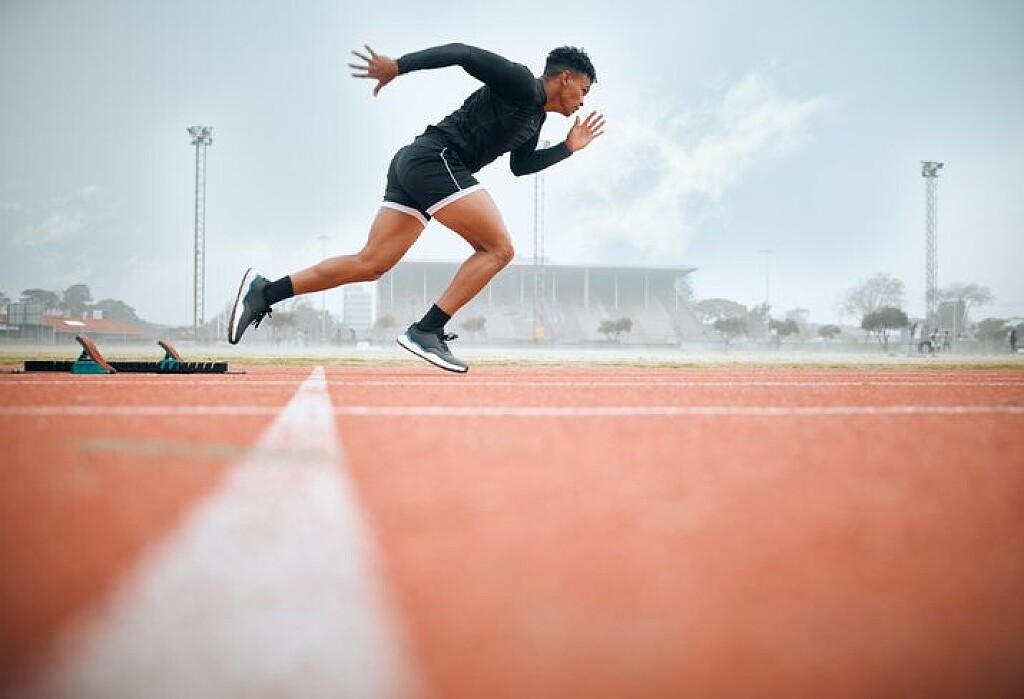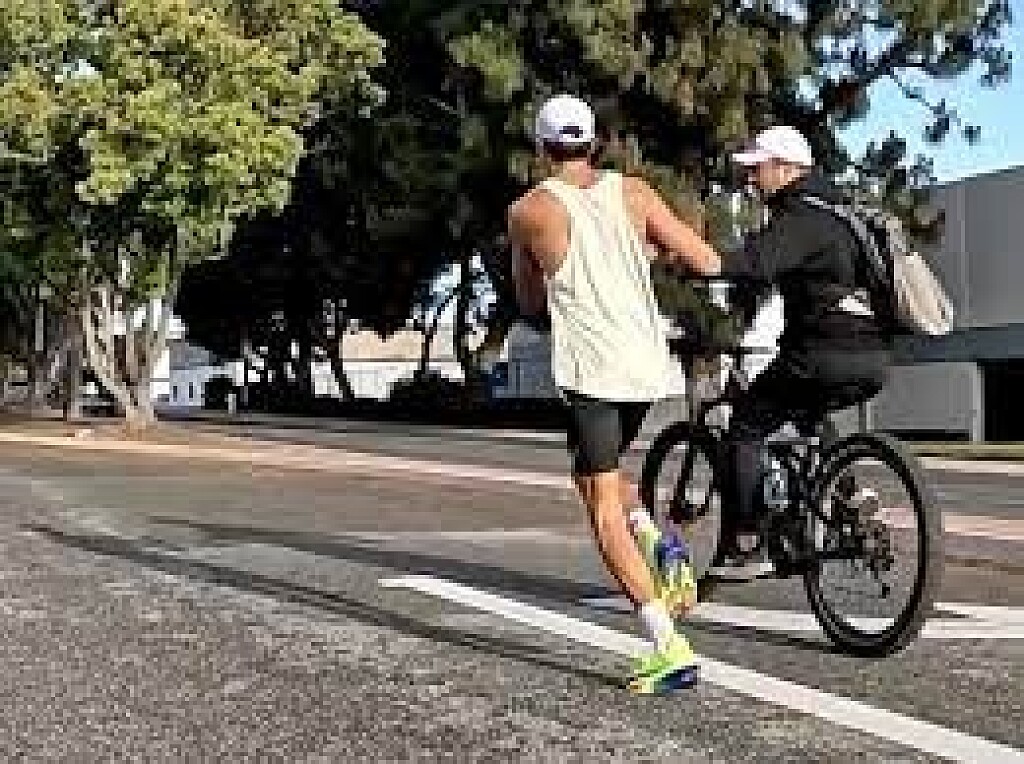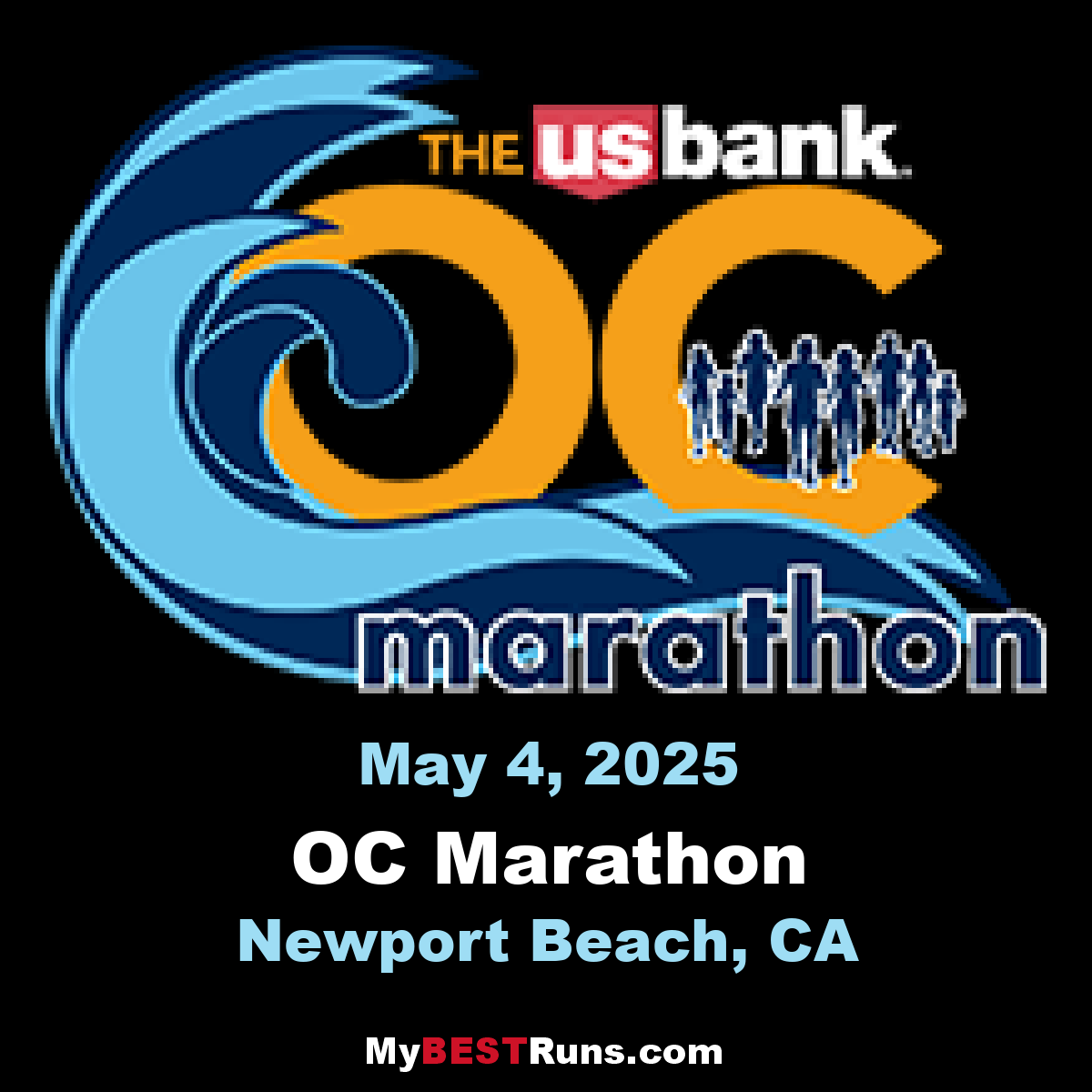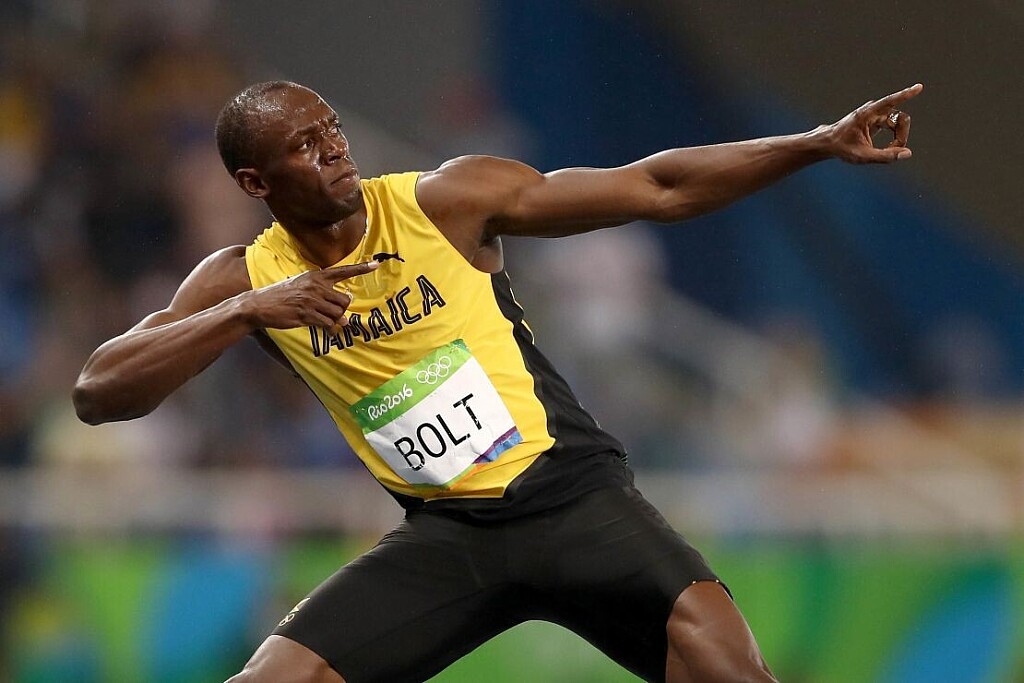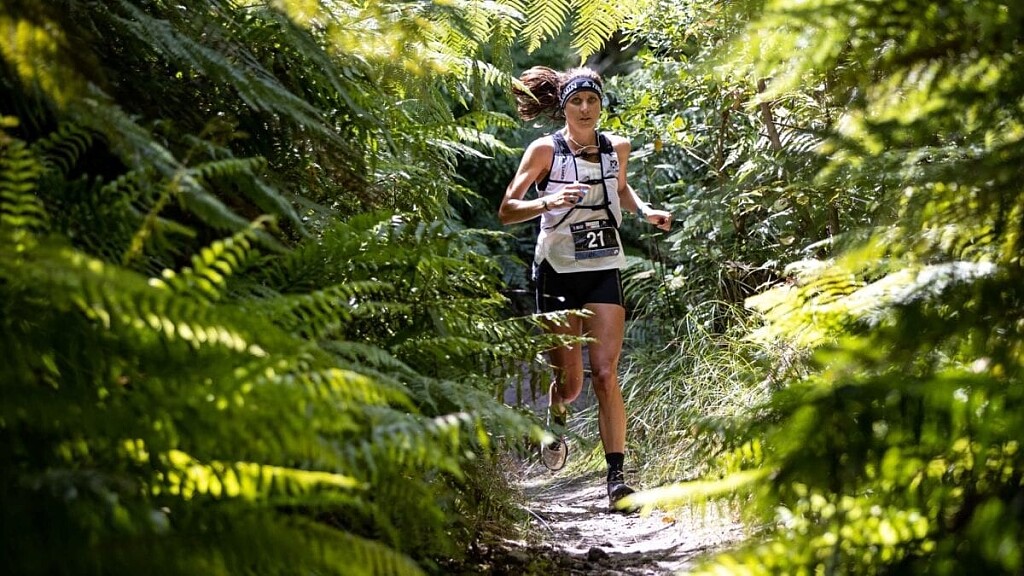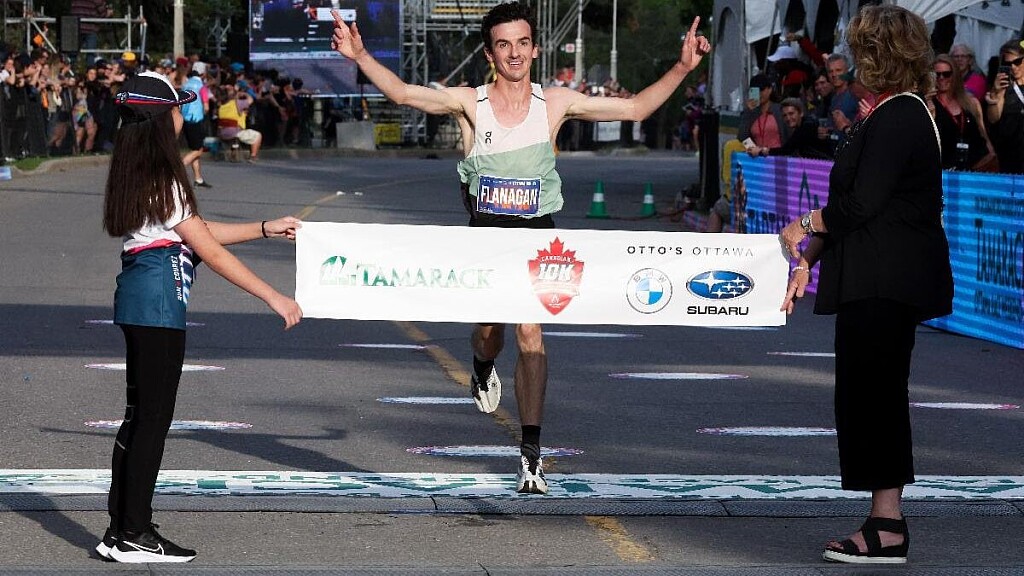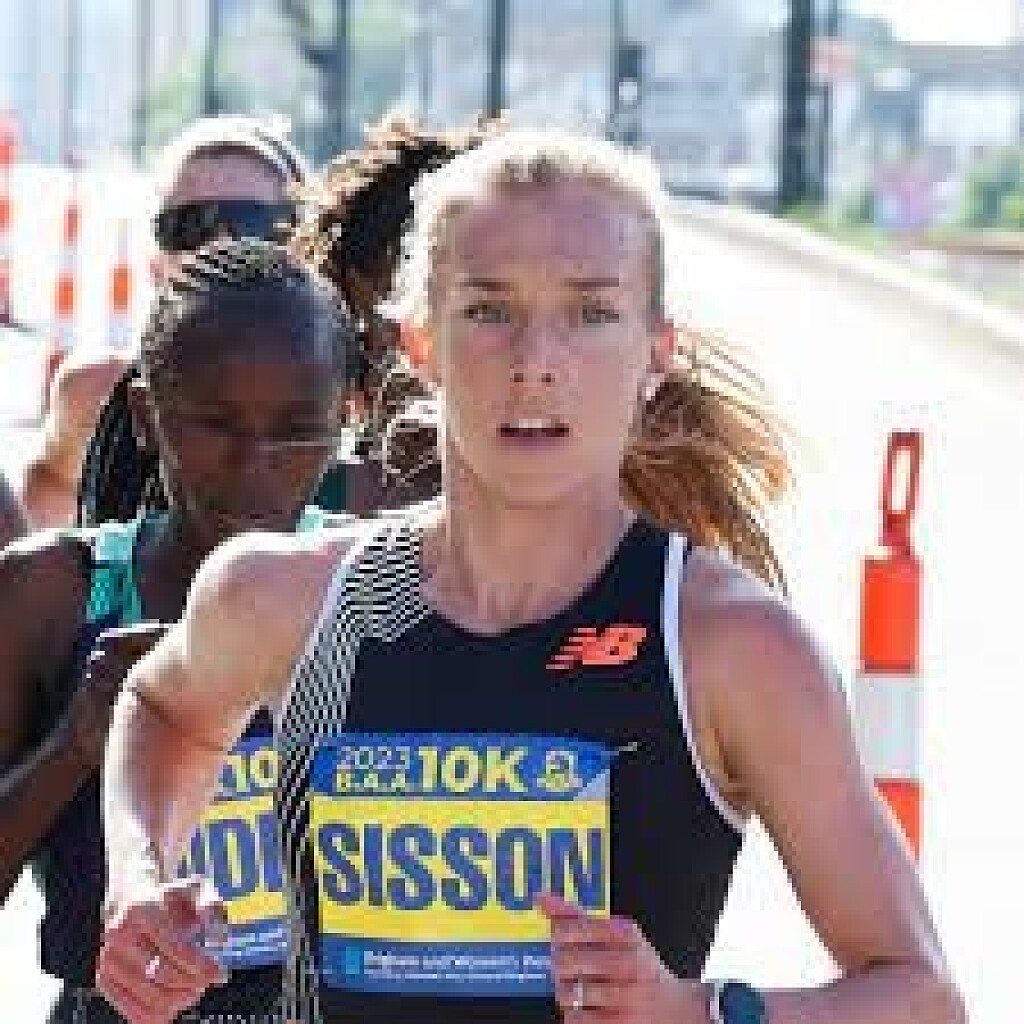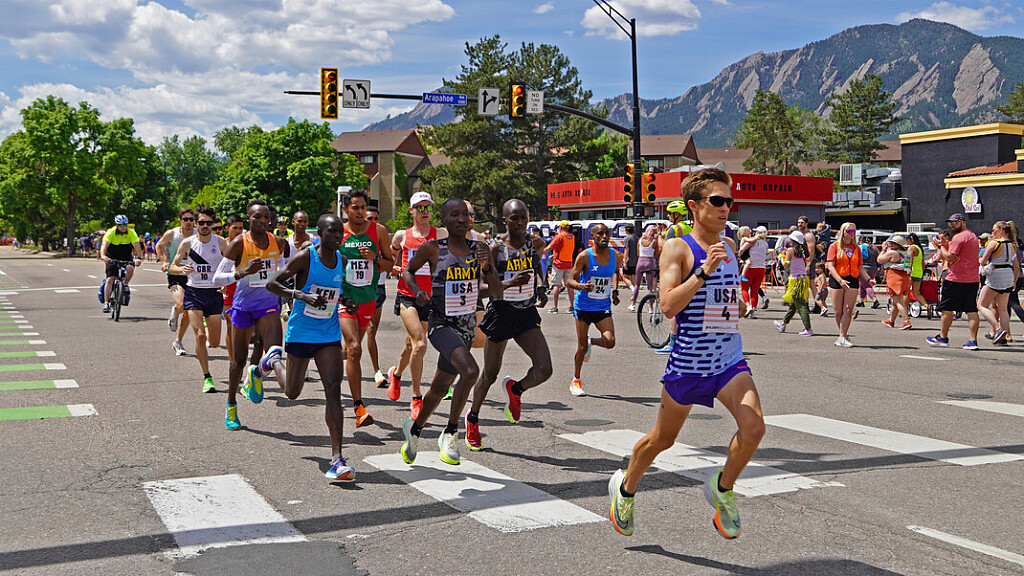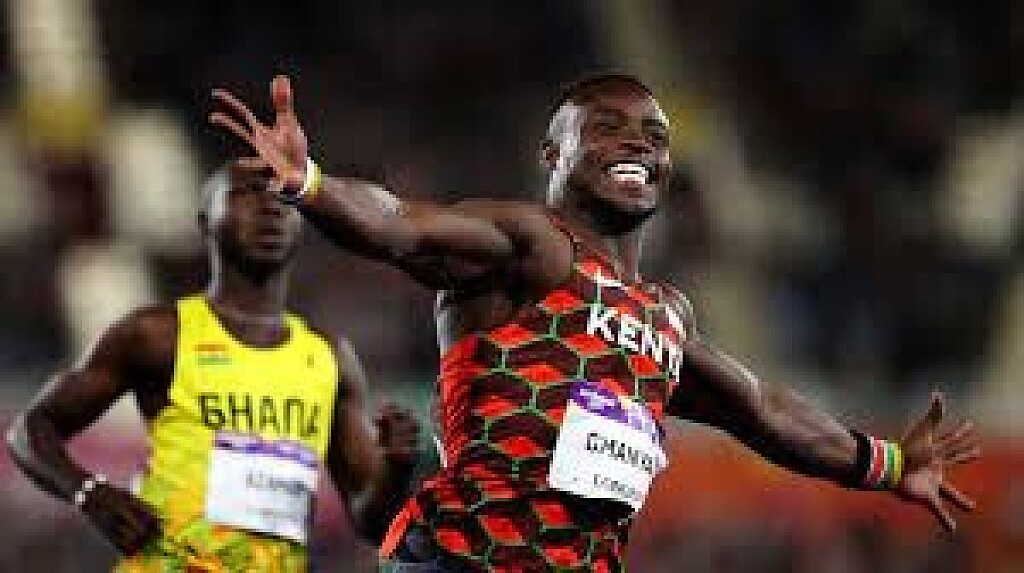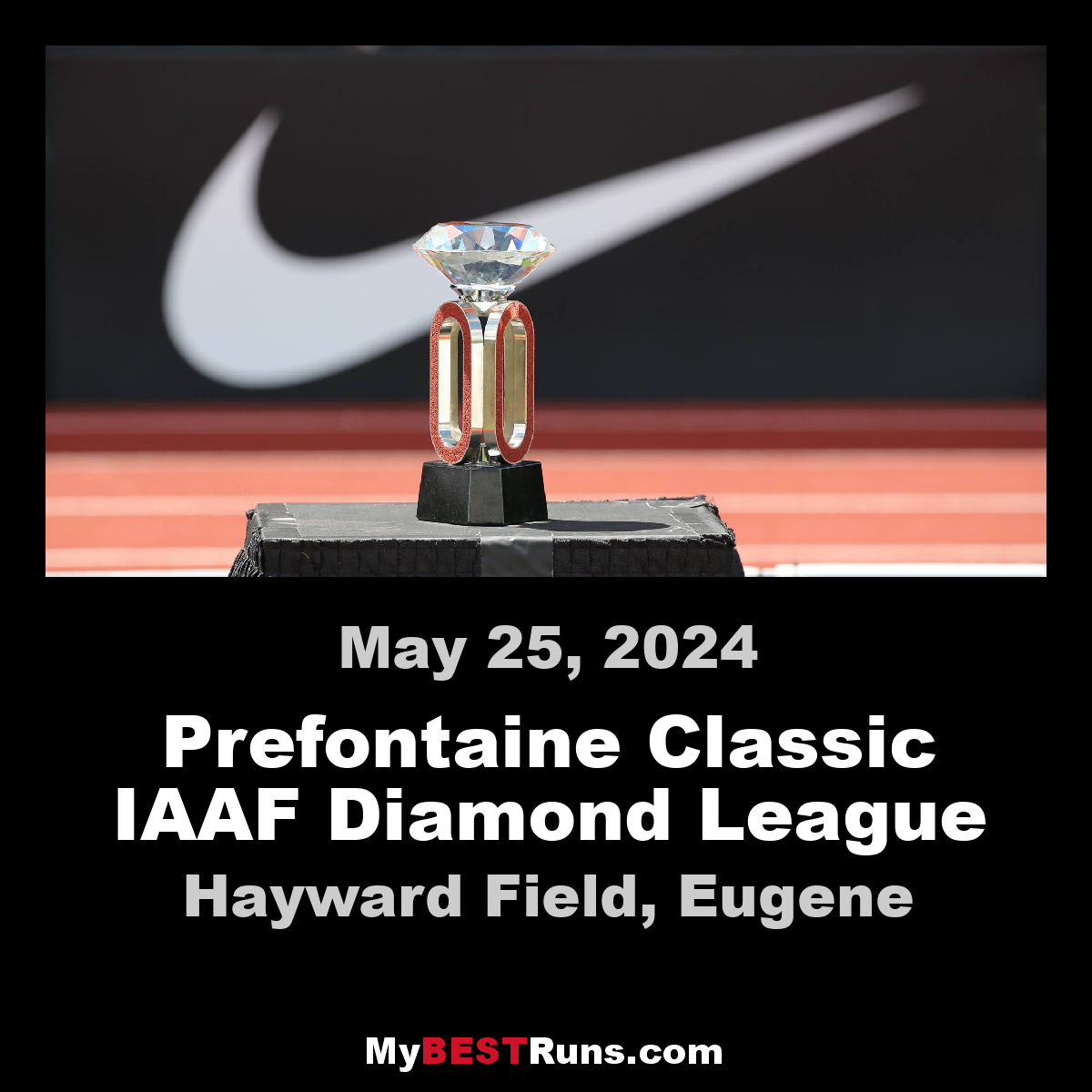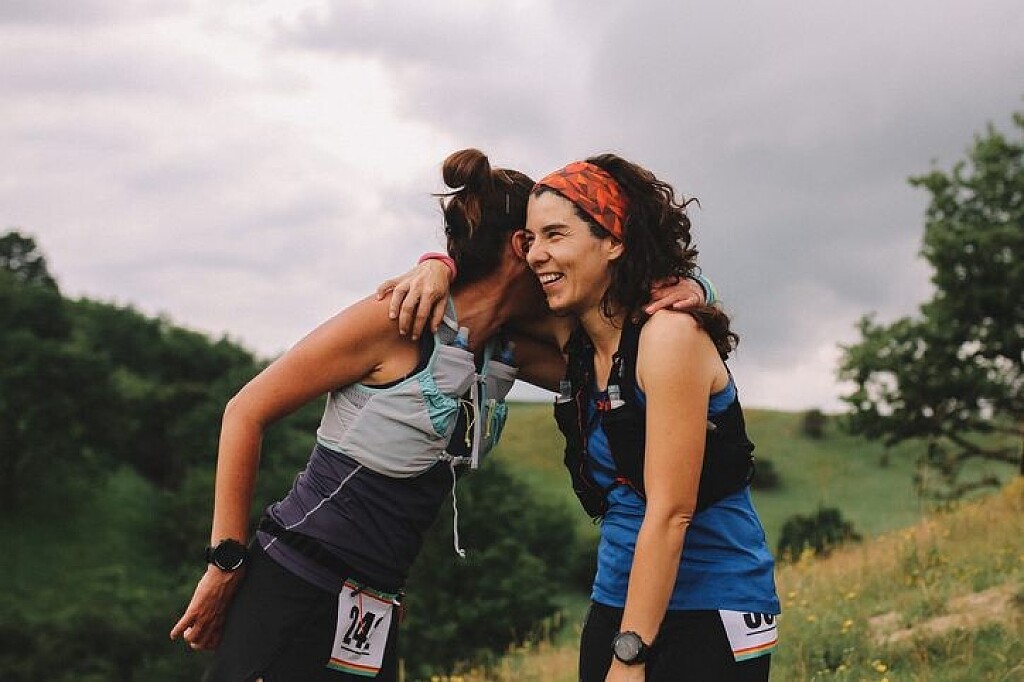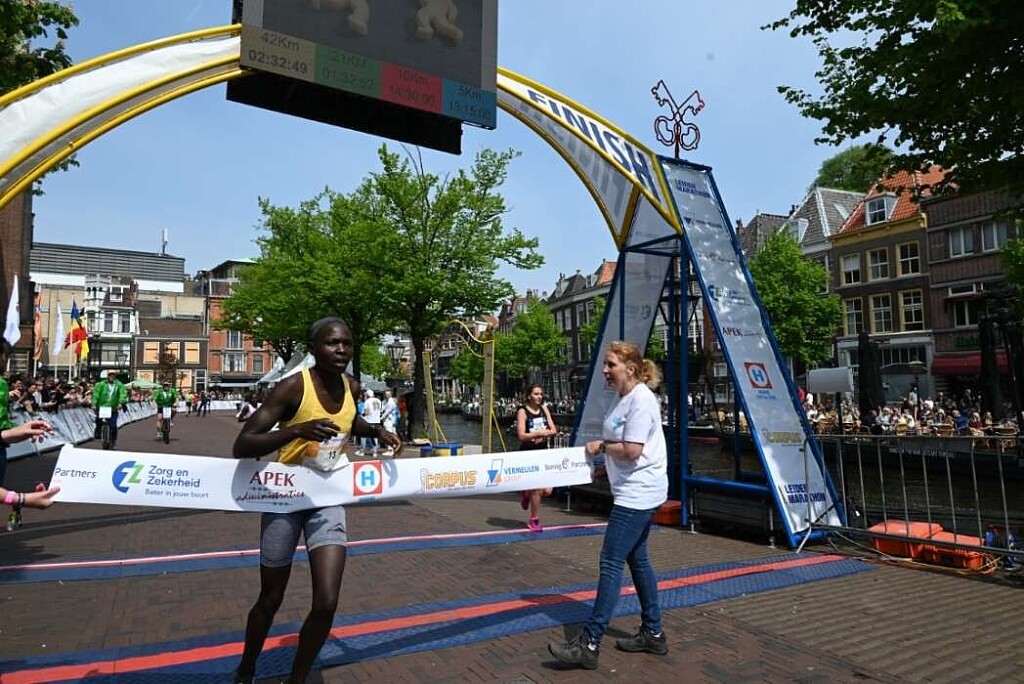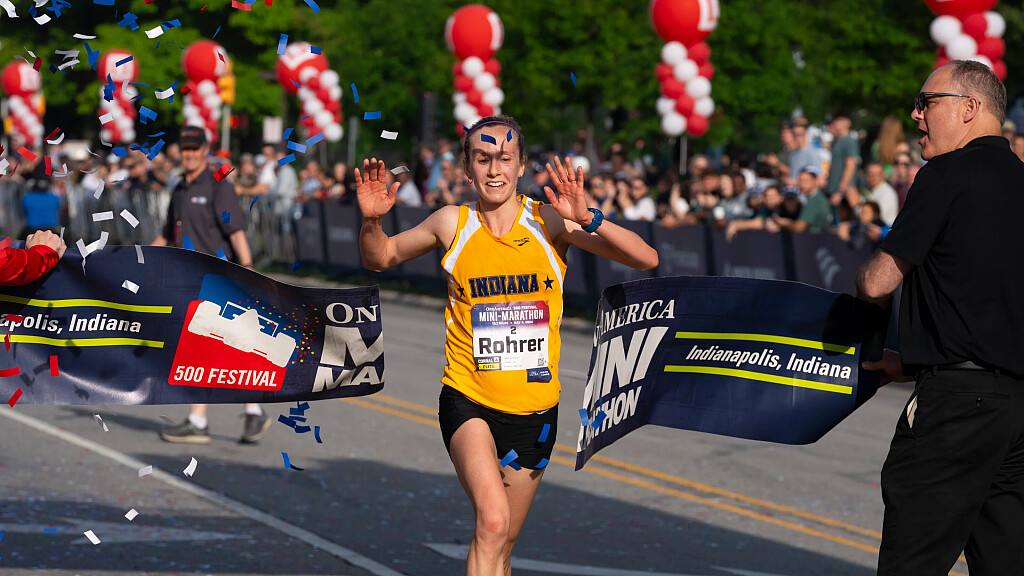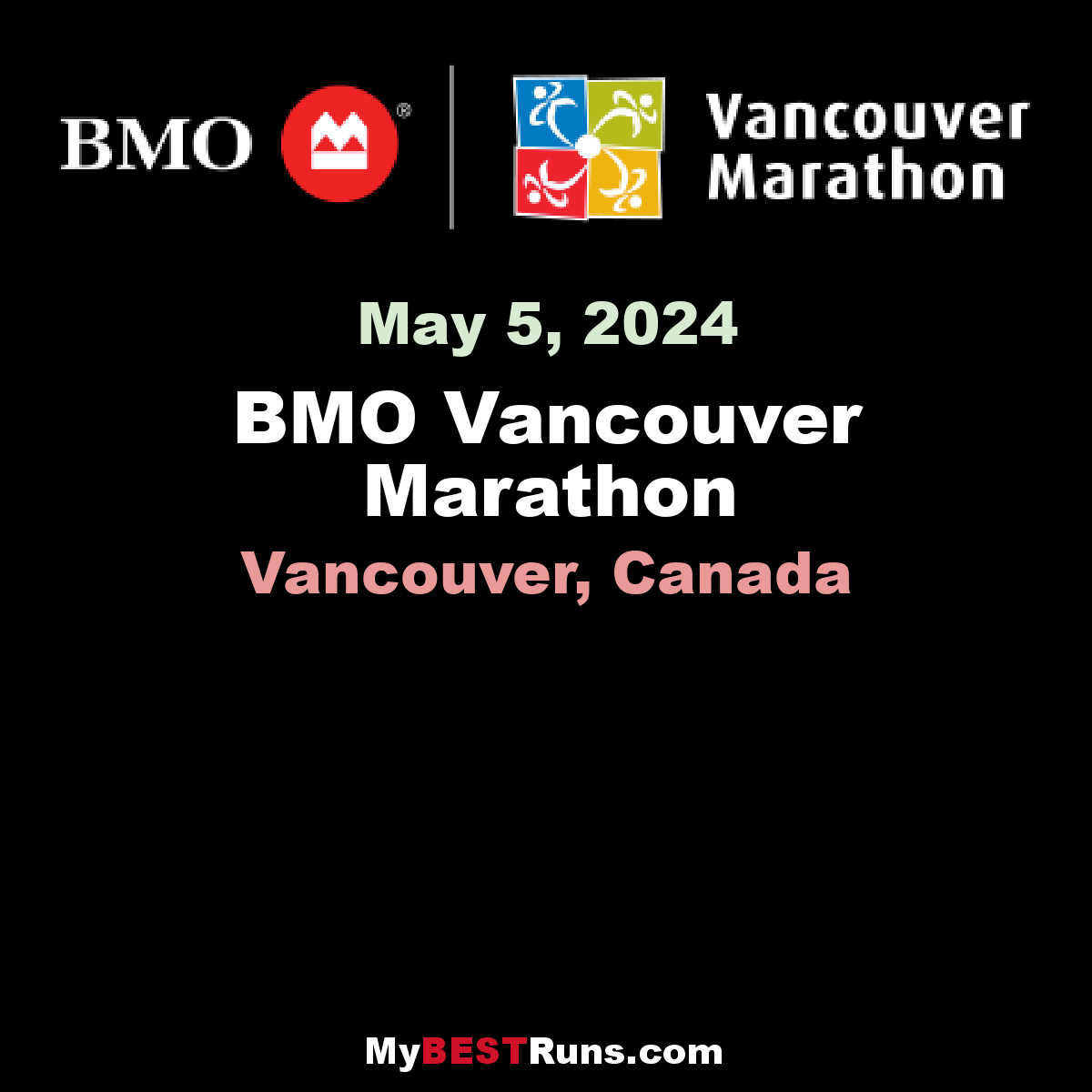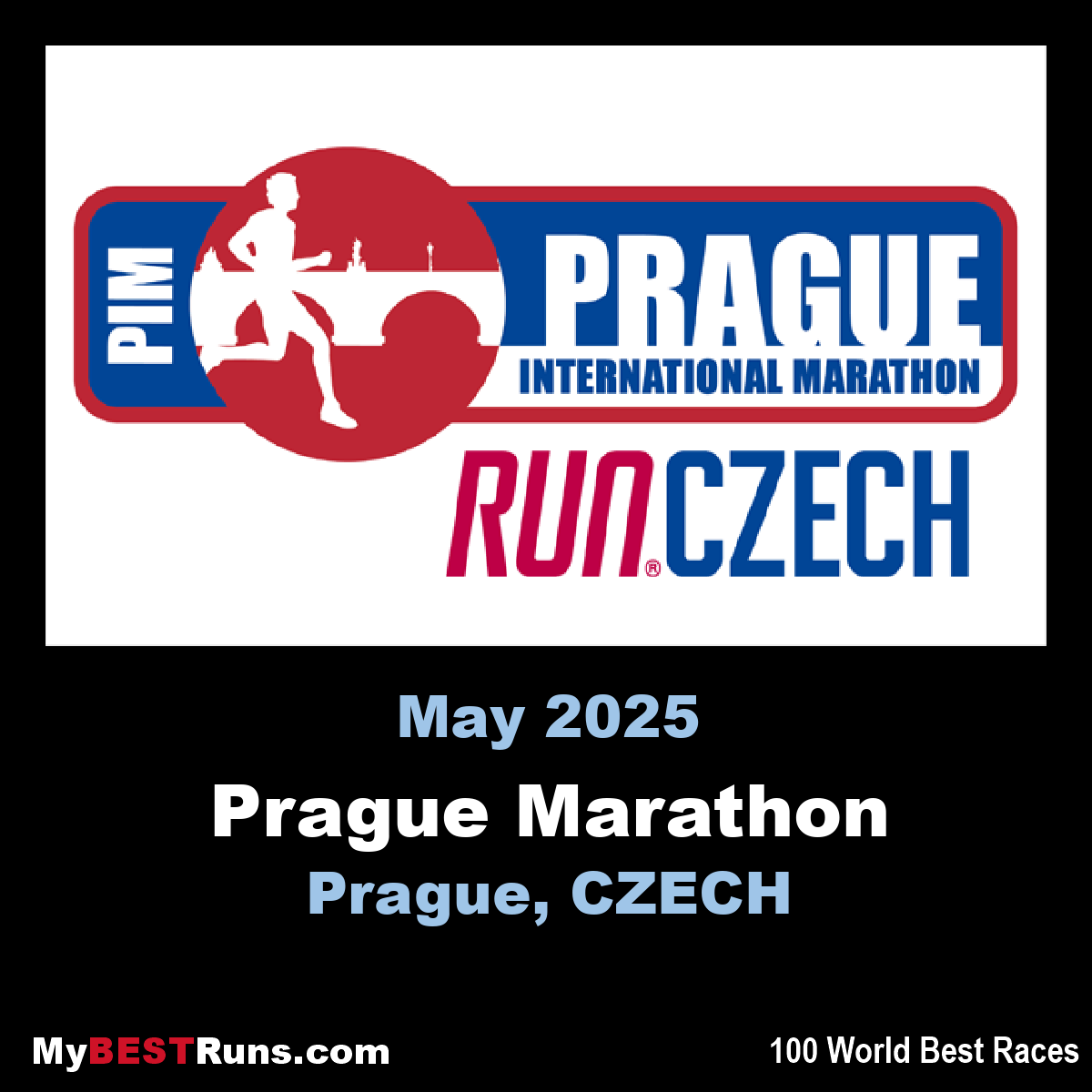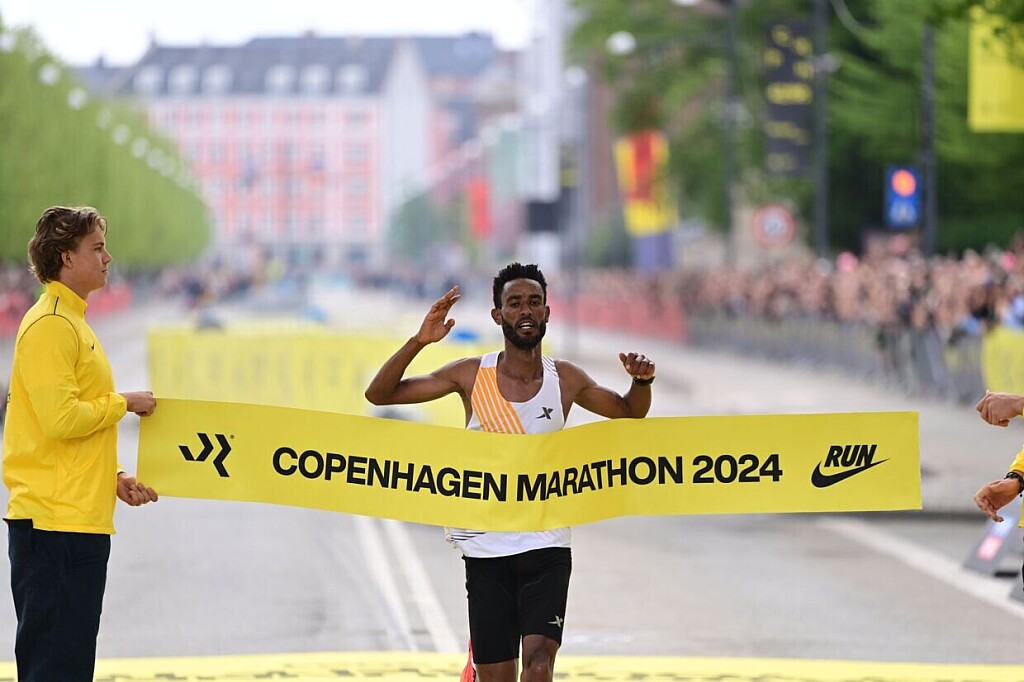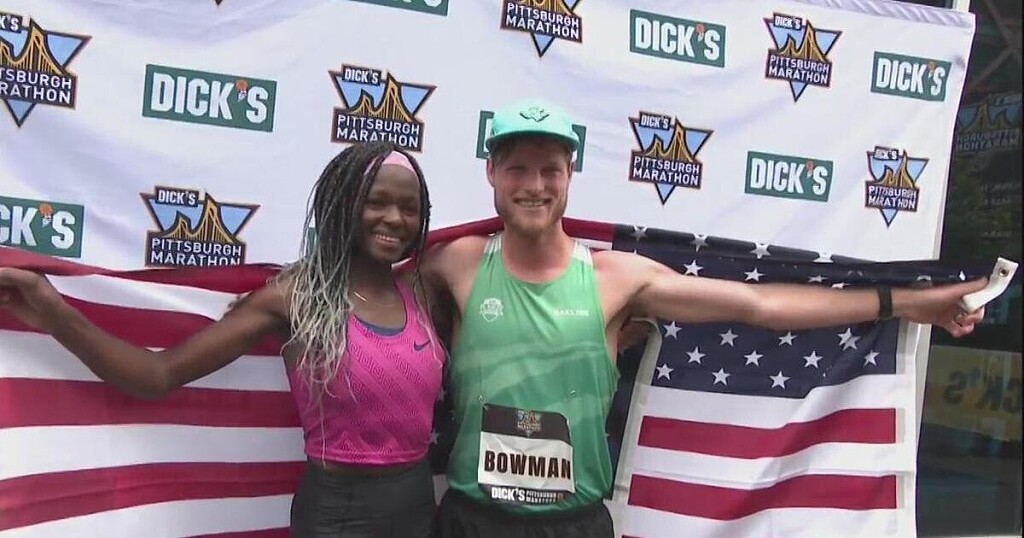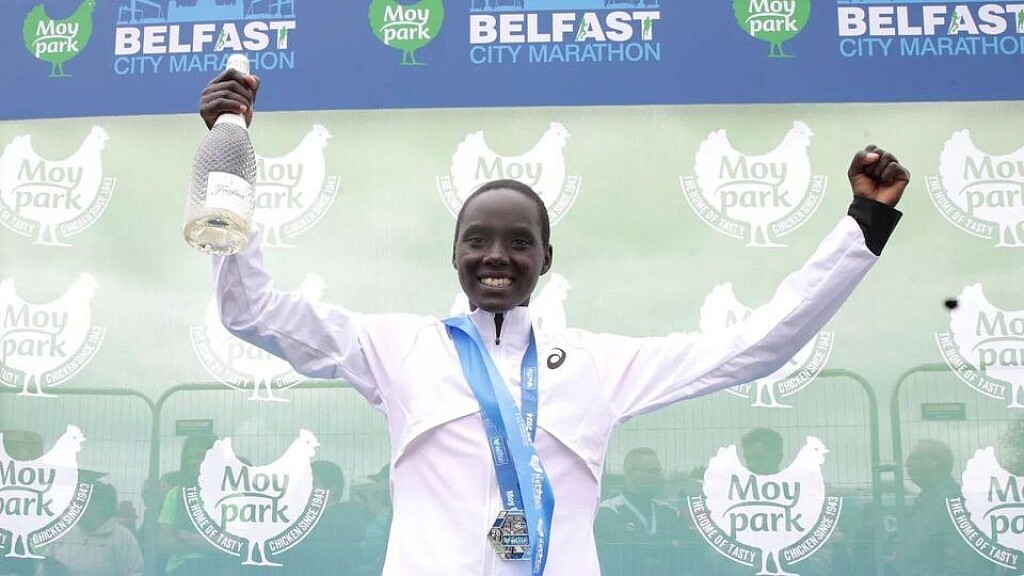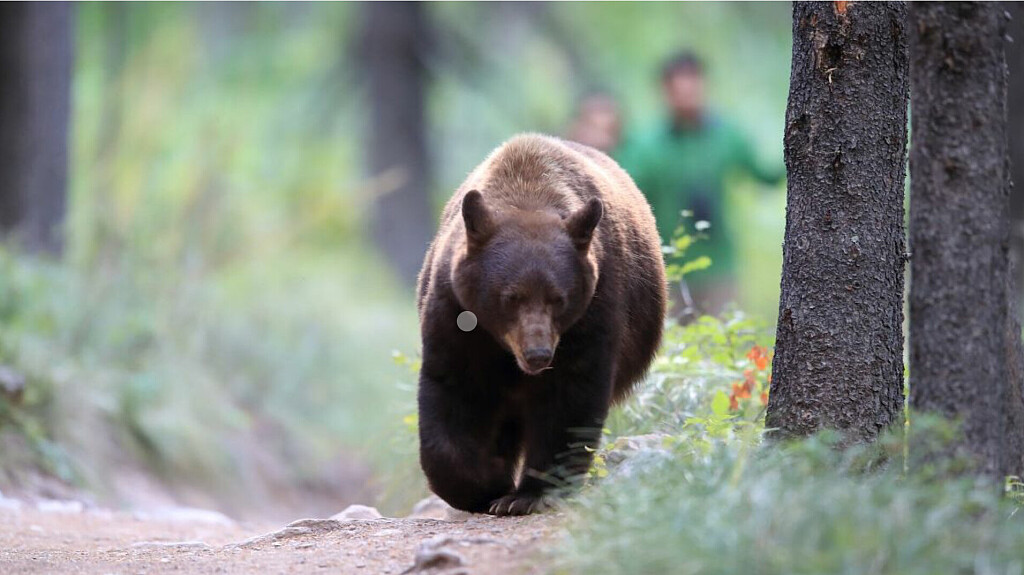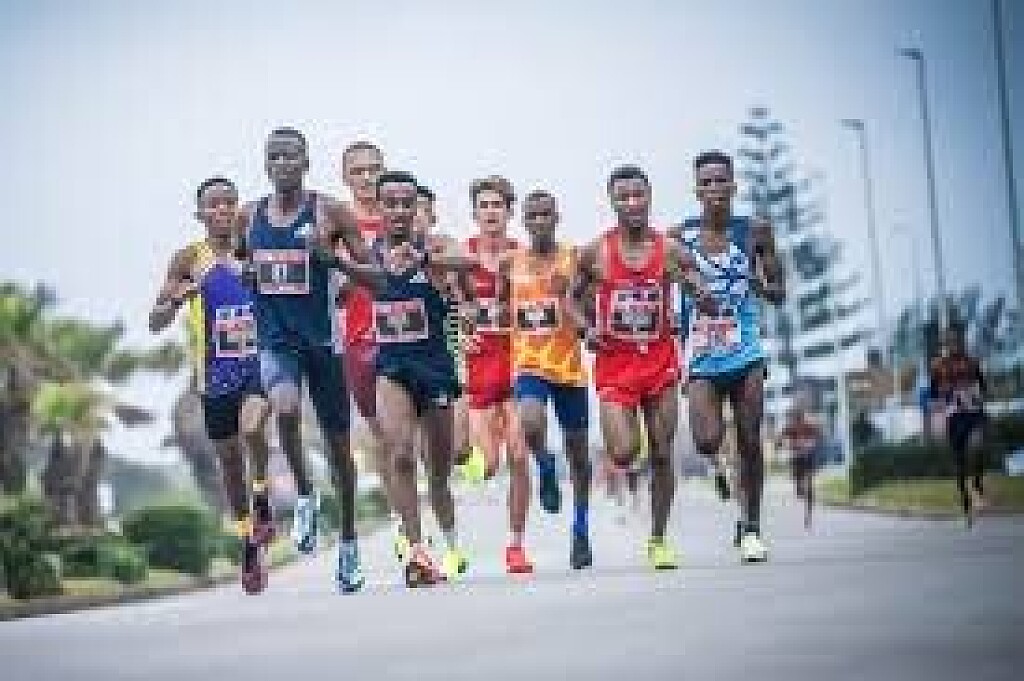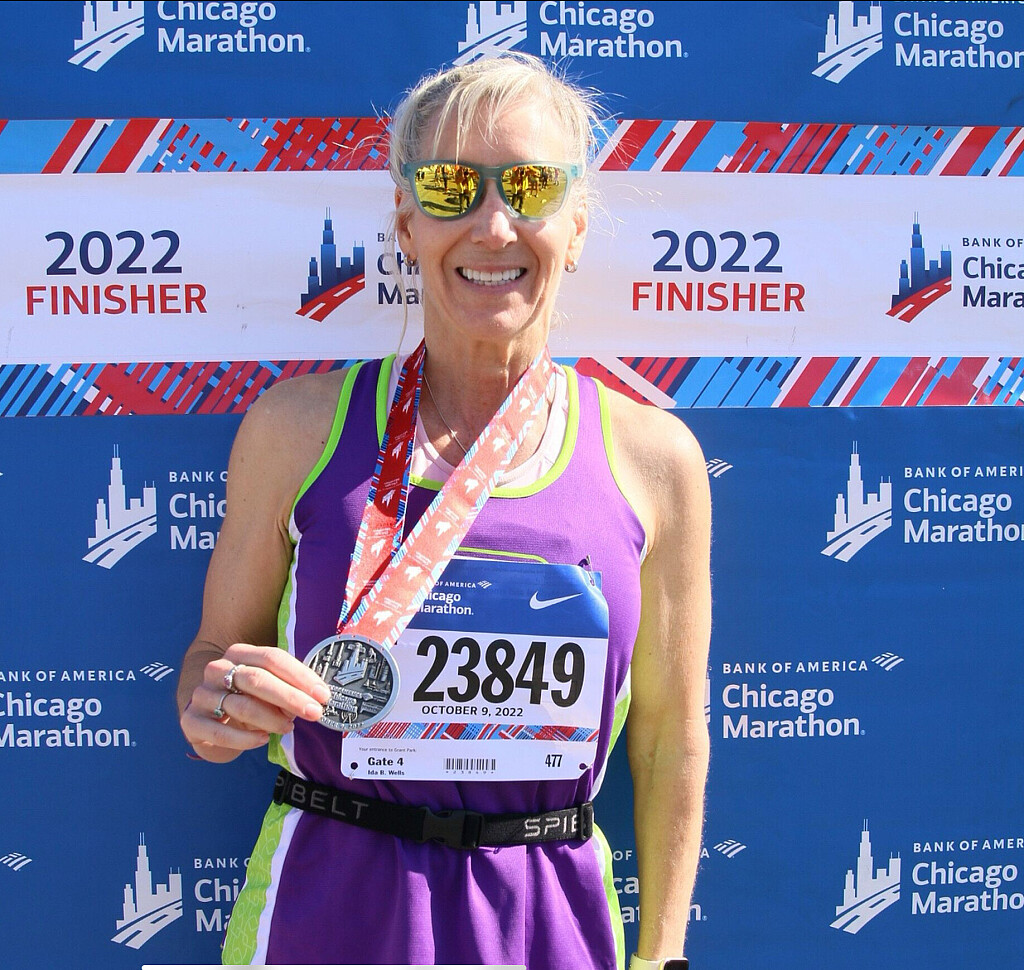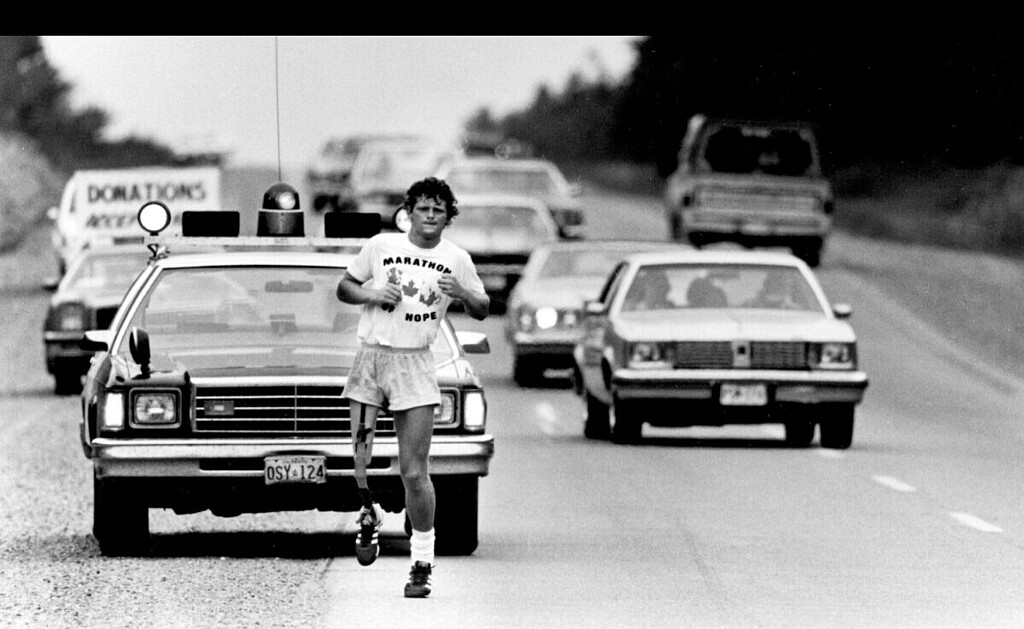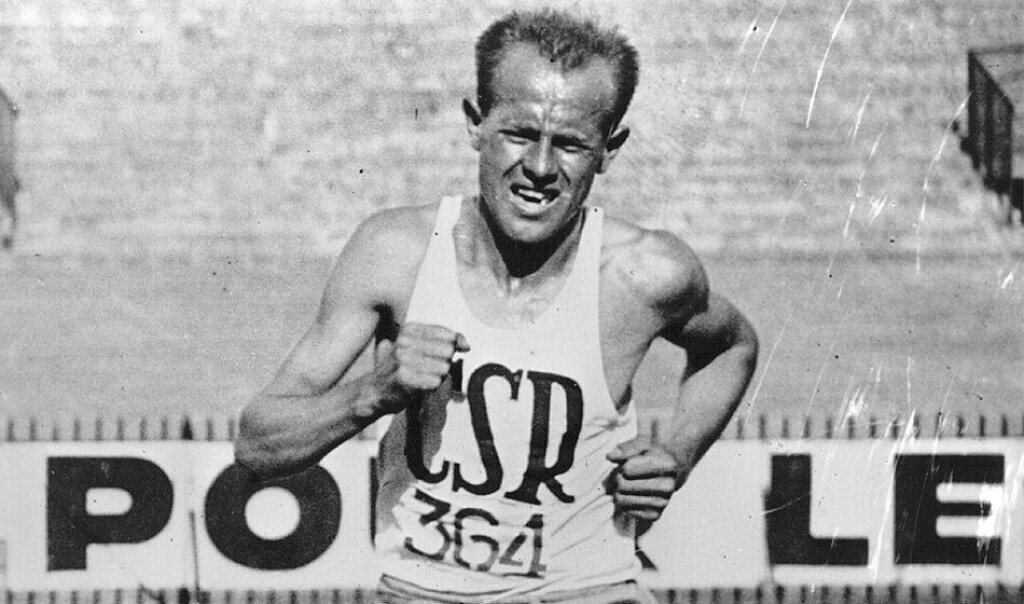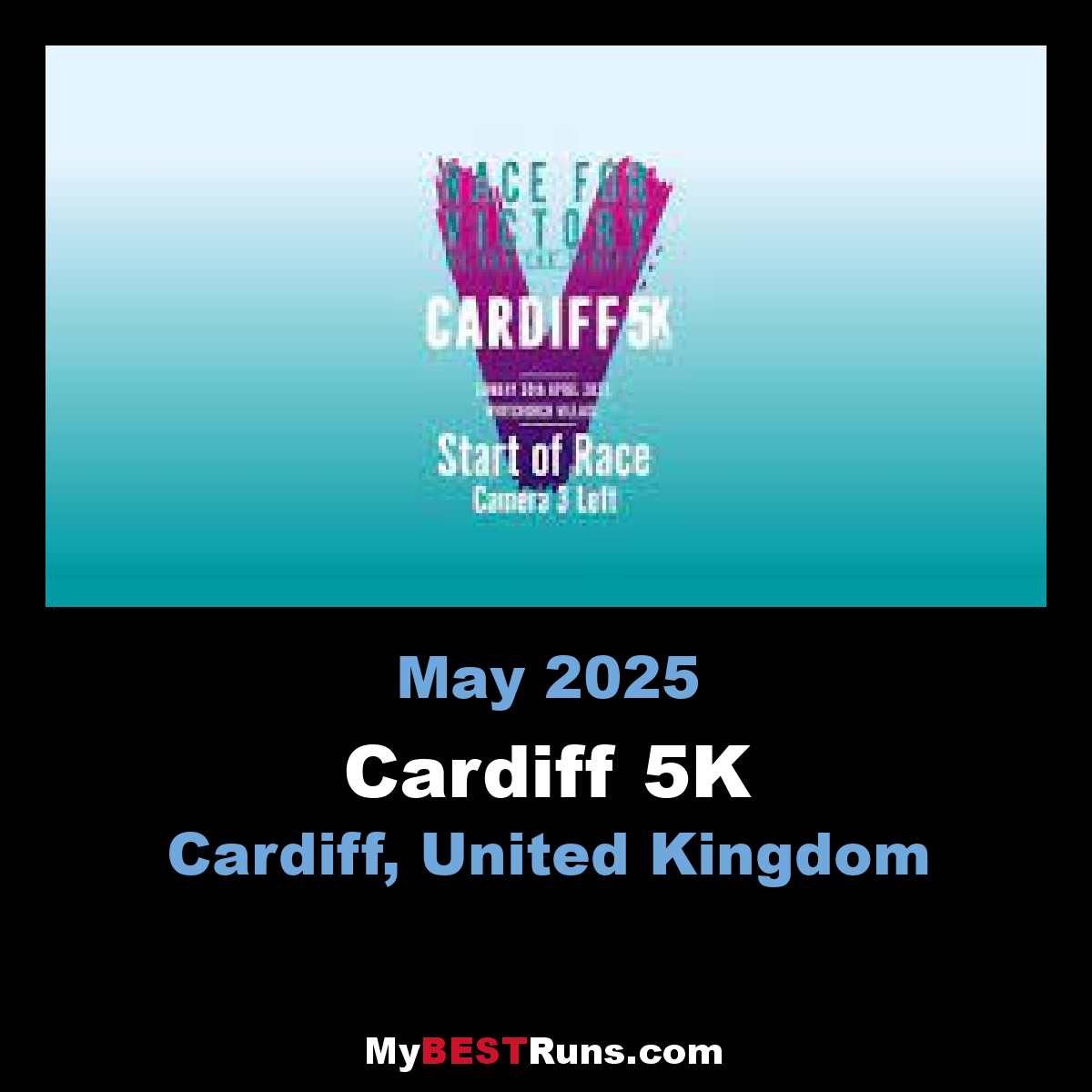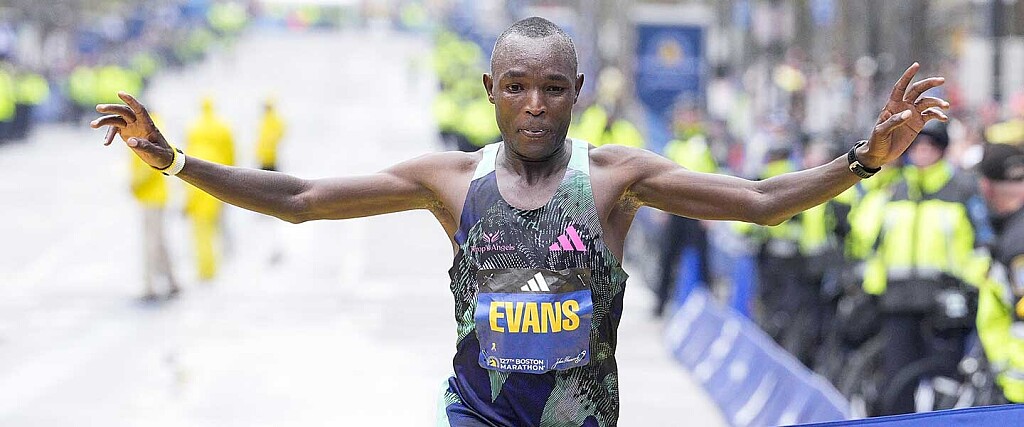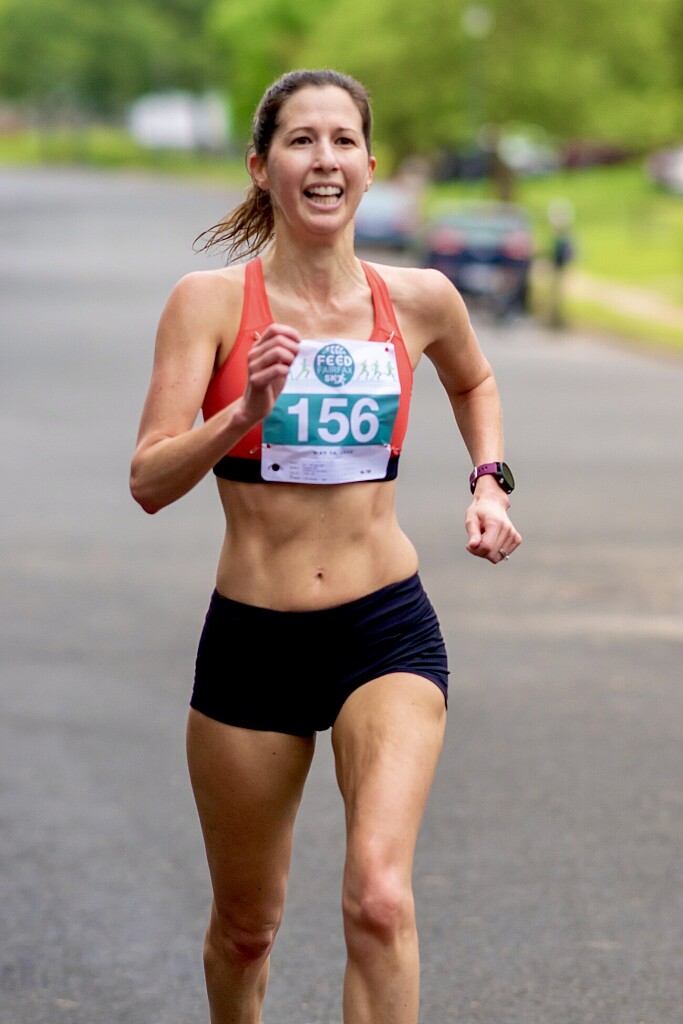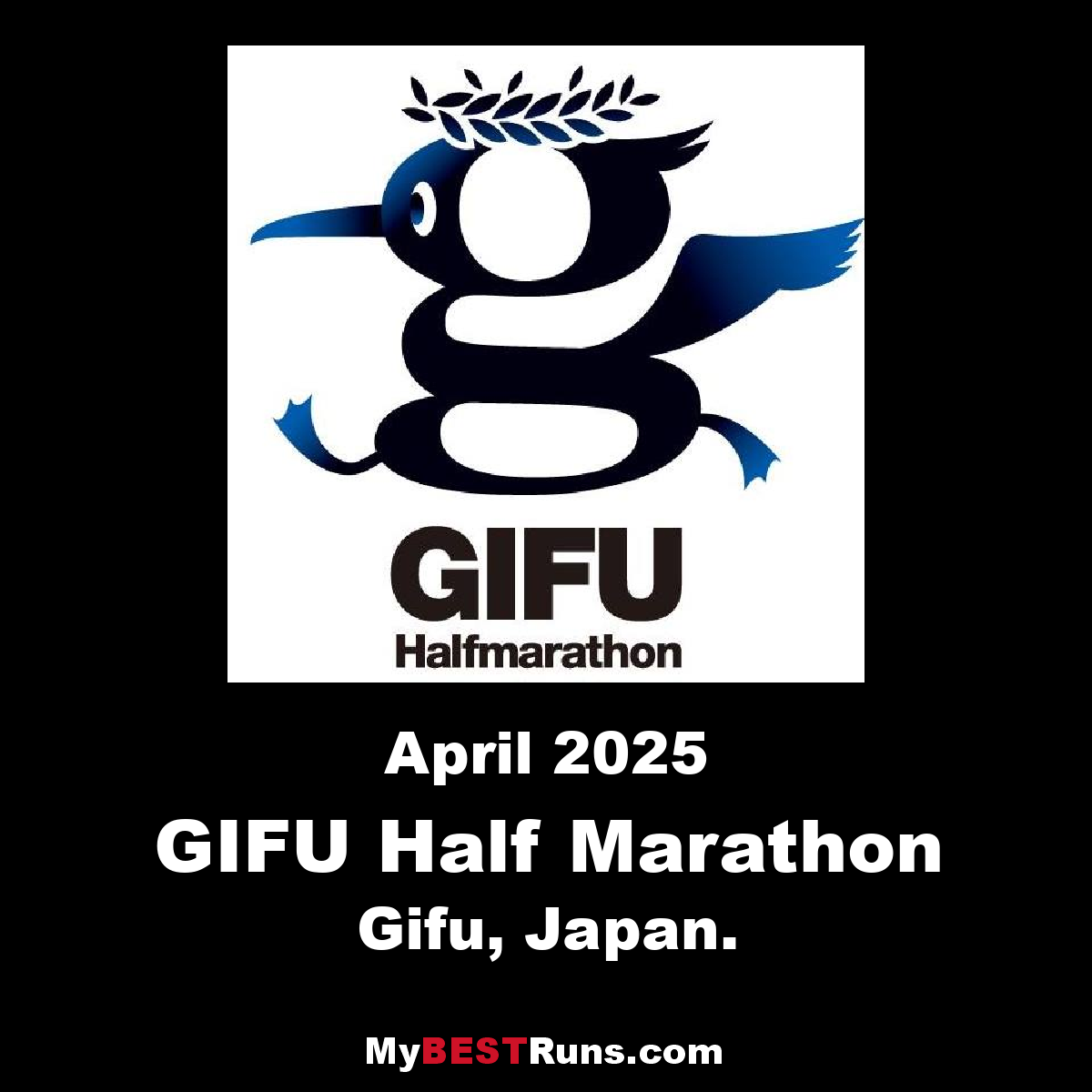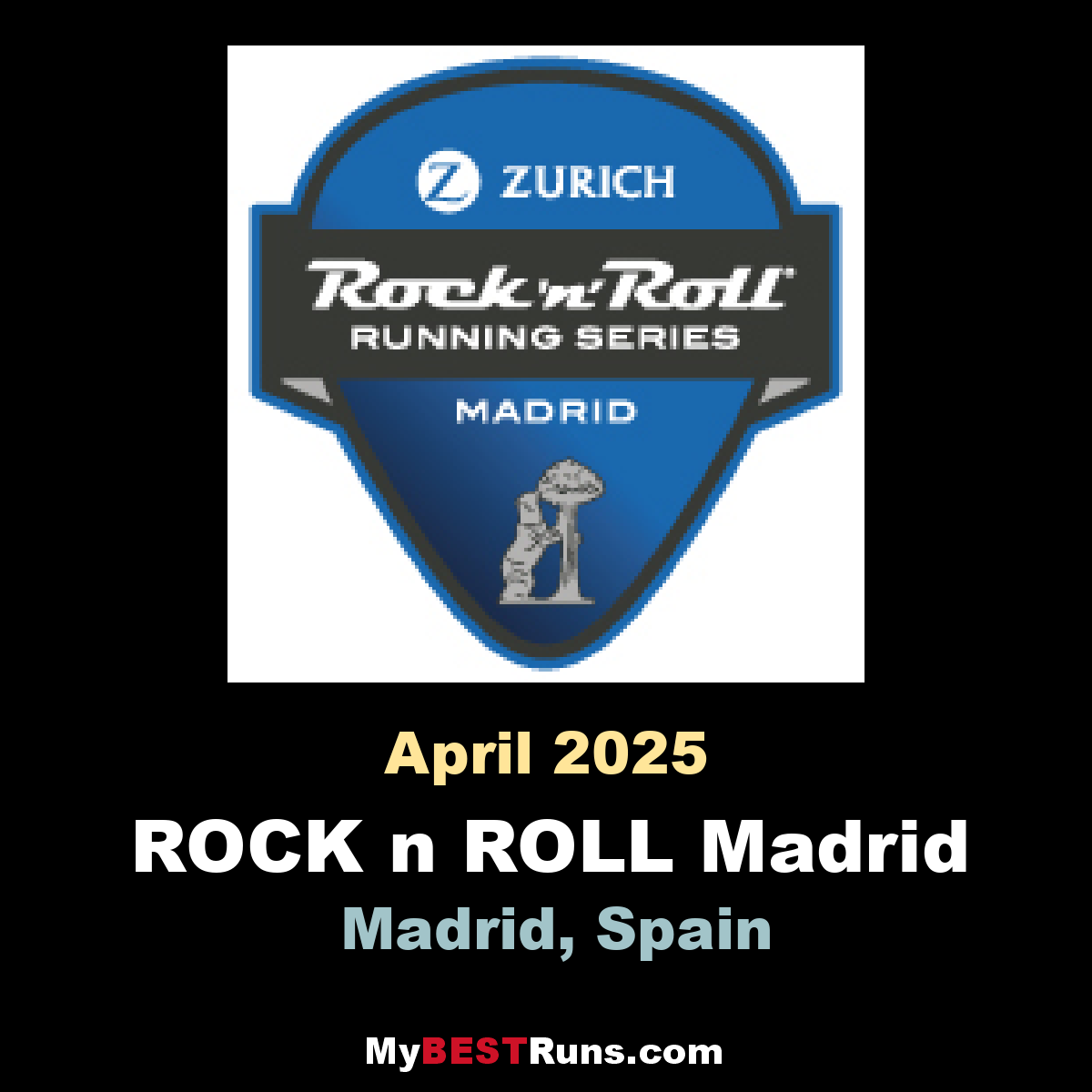Running News Daily
Running News Daily is edited by Bob Anderson. Send your news items to bob@mybestruns.com Advertising opportunities available. Train the Kenyan Way at KATA Kenya and Portugal owned and operated by Bob Anderson.
Index to Daily Posts · Sign Up For Updates · Run The World Feed
Three snappy interval sessions for unstoppable stamina
Becoming a strong runner means occasionally suffering through some discomfort, whether it’s during a long training run or a harder-than-anticipated race day. Spice up your weekly routine with some pain-tolerance-building intervals by adding a stretch session. Adaptable for any ability, a stretch workout will have you pushing your limits and will leave you spent.
A stretch session involves covering slightly more distance in each segment of a set of time-based intervals, culminating in an all-out effort in the final push. This type of workout challenges you to pay close attention to your effort level, while the gradual increase in pace builds discomfort tolerance by forcing you to speed up as your legs tire.
It’s important to pace yourself in a stretch session; choose your starting speed wisely. If you begin too fast, you won’t be able to increase your pace from there—your first interval should be hard, and your last one or two should be an all-out effort. Adjust the length (and number) of your intervals according to your ability or goals, and feel free to run stretch sessions on road, track or trail.

1.- Stretch interval basics
Warm up with 10-15 minutes of easy running.

Run 5-6 x 2 minutes, with each progressively getting faster—take 3-4 minutes rest as you jog back to your starting point.
Cool down with 10-15 minutes of easy running.
2.- Uphill stretch session
This session is done by effort, rather than using a GPS watch to calculate distance; you could also use markers instead of a watch, when running on the flats.
Warm up with 15 minutes of easy running.
Run fast uphill for 1 minute and drop a marker (a brightly colored sock works) at your stopping point; recover over 2 minutes as you run back to your starting point.
Run uphill fast for 1 minute again, aiming to cover slightly more distance than you did the first time. Drop a second marker at your stopping point. Recover over 2 minutes as you jog back to your starting point.
Repeat 6-10 times, depending on your fitness level, with your final rep run at full speed.
Cool down with 10-15 minutes of easy running.
3.- Short and sweet
Short on time? This stretch workout is perfect for those days when you’re slammed but need to get in some solid training.
Warm up with 5-10 minutes of easy running.
Run 6-8 x 1 minute of progressively harder efforts, with 2 minutes of easy running as you move back to your starting position.
Cool down with 5-10 minutes of easy running.
After any harder training session (even a short one), take a rest day or a very easy running day, and remember to hydrate well.
(05/11/2024) ⚡AMPby Keeley Milne
Comedian Leslie Jones Will Be A Commentator At the Paris Olympics
The former Saturday Night Live cast member is a major fan of Team USA and will be covering her third Olympics as “chief super fan commentator.”
Comedian Leslie Jones will be an official commentator for the 2024 Paris Olympics, rejoining NBCUniversal’s coverage as “chief superfan commentator.” The former Saturday Night Live cast member will provide segments for a variety of events on NBC, Peacock, other NBCU channels and platforms, and will be posting updates on her own social media accounts as well.

“I’m pumped to be heading to Paris to report on Team USA,” Jones said in a statement. “These athletes train for years to compete at the highest level, and I’m so excited to be back in the seat with NBCUniversal, cheering for Team USA and serving as chief super fan commentator. USA!! SLAY ALL DAY!! LET’S GOOOOOO!!”
Jones was first invited to become a part of NBCU’s Olympic coverage in 2016 after she live-tweeted day one of the Summer Games in Rio, offering hilarious commentary as she rooted for Team USA. She also provided commentary for the 2018 PyeongChang Olympics.
Showcasing the energy, enthusiasm, and comedy Jones brings to track and field coverage, Citius Mag posted a reminder of the time in 2021 that the Ghostbusters actress recorded herself discovering the steeplechase event, spouting expletives and yelling in disbelief, “Is that like a roadblock they jumpin’ over? That’s not a hurdle! Okay, so like, they horses? I’ve never seen no sh*t like that.”
“We are excited to welcome Leslie back to our Olympic team,” said Rebecca Chatman, coordinating producer for NBC Olympics. “She is a passionate fan of Team USA, and we can’t wait to hear from her at events and sites across Paris.” The Olympics will take place from July 26 through August 11, and NBC will include live events in its daytime coverage and a mix of highlights and other segments in primetime. In an unprecedented scope of programming, Peacock will be streaming every sport, including live coverage of all 329 medal events.
MORE FROM RUNNER'S WORLD ON APPLE NEWS
(05/11/2024) ⚡AMPHow to Access the Elusive “Fourth Dimension” of Endurance
Consider two runners who, in lab testing, have identical values for VO2 max, running economy, and lactate threshold. These are the three quantities in the “standard model” of endurance performance; you can plug them into an equation to calculate your expected marathon time. So who will win the race?
The question is not as hypothetical as it seems. At the top end of the sport, athletes tend to have relatively similar values for all three of the parameters. And if they’re weak in one, they’ll compensate in the other two. And yet lab testing isn’t capable of reliably picking winners. The cyclist with the highest ever VO2 max flopped as a pro; the top marathoners that Nike picked for its Breaking2 marathon, including Eliud Kipchoge, didn’t have unusually high lab numbers. There’s clearly something missing from the equation.

Over the past few years, researchers have zeroed in on a suspect for what one paper calls “the fourth dimension” in the endurance equation. It has various names: durability, physiological resilience, fatigue resistance (which is the term I used when I first wrote about it in 2021). It’s a measure of how much your physiological parameters change over the course of a race. Maybe your VO2 max is 70 ml/kg/min at the start of the race, but has dropped to 65 ml/kg/min by the time you’ve run 20 miles. If your doppelgänger starts with the same values but still has a VO2 max of 67 ml/kg/min after 20 miles, he’ll beat you.
No one is entirely sure what determines fatigue resistance, which is why there’s currently a flurry of research into the topic. Two new papers fill in some gaps, suggesting that what you do before the race and what you do during the race can both have an impact.
The first study, published in the Scandinavian Journal of Medicine & Science in Sports by Runar Jakobsen Unhjem of Nord University in Norway, compares trained runners with “active adults.” The runners had been training for an average of about a decade, averaging a little over 40 miles a week with 10K bests of 33 minutes for men and 38 minutes for women. The active adults played recreational sports but did no more than two days a week of endurance training. Both groups completed a pair of VO2 max and running economy tests before and after an hour of running at a moderate pace corresponding to 70 percent of their individual VO2 max.
In both groups, VO2 max and running economy got worse after an hour of running—but the decline was much steeper in the active adults. Running economy is a measure of how much energy it takes to sustain a given pace; that energy cost increased four times more in the active adults than in the runners. VO2 max dropped by 5.0 percent in the active adults, but just 1.2 percent (not a statistically significant change) in the runners.
That means the active adults had to work harder to sustain the same pace, while at the same time their capacity to do that work was declining. Both groups started at 70 percent of their rested VO2 max, nominally working equally hard. But the figure below shows that by the end the active adults (AA) were pushing at well over 75 or their max while the trained runners (TR) were barely working harder at all:
The takeaway here is that fatigue resistance isn’t just something you’re born with, which is good news. It will improve with training–although what specific type of training targets it best remains to be determined.
The second study, published in the European Journal of Sport Science by a multinational research team led by James Spragg of the University of Cape Town in South Africa, looked at what types of in-race efforts cause the biggest changes in baseline values. Spragg was one of the authors of the study I wrote about back in 2021, which looked at fatigue resistance in professional cyclists after spending amounts of energy ranging between 1,000 and 3,000 kilojoules. But there’s a big difference between doing 3,000 kilojoules of work at a steady pace and doing it with surges and hill-climbs and so on.
The new study tested fatigue resistance in 14 professional cyclists after burning 2,000 kilojoules in two different ways. In one test, they stuck to steady low-intensity riding below their critical power. In the other test, they did 5 eight-minute intervals of hard riding above critical power plus enough easy riding to accumulate roughly the same amount of total work. Sure enough, the higher-intensity intervals produced a greater drop in their baseline physiological values, with the biggest effects on sprinting ability. The results suggest that, within a given run or ride, mid-race surges are what will deaden your finishing kick.
Based on the individual results, Spragg and his colleagues classify the cyclists as fatigue-resistant, semi-fatiguable, or fatigue-sensitive, with three, four, and seven of the riders, respectively, falling into these categories. Their previous research using real-world data from pro cyclists suggests that, all else being equal, fatigue-resistant riders are the ones who win races. So what determines who ends up in which category?
Other studies have linked poor fatigue resistance to inadequate fueling, but in this study all the riders took in 90 grams of carbohydrate per hour. There may also be metabolic differences in how different people use their internal stores of carbohydrate versus fat. The new data suggests that keeping your pace steady and avoiding unneeded surges might be advantageous. And as with the comparison between trained runners and active adults, training might be part of the answer. Previous data from pro cyclists did find that higher training volume was associated with greater fatigue resistance. In other words, we still haven’t figured out how to access the fourth dimension—but we’re finally getting some clues.
(05/11/2024) ⚡AMPMarathon winner disqualified after taking, drinking water from dad during race
The winner of a marathon was disqualified after taking and drinking water from his father during the race.
According to PEOPLE, 24-year-old Esteban Prado initially finished in first place in the Orange County Marathon on Sunday. Per the publication, he crossed the finish line with a time of 2 hours, 24 minutes and 54 seconds, but was disqualified soon after.
USA Today reported that Prado's father rode up to the former winner on a bike and gave him water during the competition. Organizers also said that Prado drank from the bottle, which violated the USA Track and Field rulebook, according to the publication.

Per USA Today, citing the rulebook, competitors may only use water from official hydration stations or if it's carried or attached to the runner from the beginning of the race, with no outside drinks being permitted without permission from the judges or referees.
Race director Gary Kutscher issued the following statement to USA Today:

"We were forced to disqualify a participant after it was confirmed they received unauthorized assistance from an individual on a bicycle, in violation of USA Track and Field rules and our race regulations. We take these rules seriously to ensure fairness and the integrity of our event for all competitors."
Prado spoke with KABC, and said that he wasn't aware of the rule regarding taking water from spectators, adding that only the second place runner could have seen him drink it.
"Whenever I got to these stations, the volunteers were scrambling because I'm the only runner in sight," Prado told KABC. "You could barely see me, like, at certain turns."
Prado went on to tell KABC's reporters that he didn't lose much from the decision.
"I don't want to argue over something that's 15 minutes away from you, you get no money or anything. You know, if he wanted that congratulations for that first place, if he really felt like he needed it, it's just for him at the end of the day," Prado told the station. "I really got nothing out of it. I know I won."
Per KABC, Jason Yang of San Pedro was declared the winner with a time of 2 hours, 25 minutes and 11 seconds.
(05/10/2024) ⚡AMPby WKRC
OC Marathon
A gorgeous, scenic course that unfolds through the Southern California coastal communities of Newport Beach and Costa Mesa awaits at the OC Marathon, Half Marathon and Wahoo 5K & Kids Run, which saw more than 14,000 runners, walkers, wheelchair and hand crank competitors cross the finish line last year. The marathon route is a net downhill course with a few...
more...Usain Bolt eyes a comeback
The greatest sprinter of all time is set to make a brief return, after Paris Saint Germain superstar Kylian Mbappe accepted the challenge of facing the eight-time Olympic champion in a 100m race.
Usain Bolt might well lace up his spikes again, writes Vlad Andrejevic. Bolt, the greatest sprinter of all time, is set to make a brief comeback, after Paris Saint Germain superstar Kylian Mbappe accepted the challenge of facing eight-time Olympic champion Bolt in a 100m race, though he does not fancy his chances against the Jamaican icon.
Bolt, who is an avid football fan and participates in numerous charity football events, recently spoke about his admiration of the 25-year-old forward, admitting he was “inspired” by the French international and suggested that Mbappe should face him in a charity race.

The World Cup winner responded warmly to Bolt’s comments at a recent promotional event organized by sponsors Nike and his ‘Inspired by KM’ foundation, offering fans the prospect of a tantalizing crossover event.
“It would be fun, why not one day if we both have the time? I don’t expect much from the result,” said Mbappe when asked about the potential matchup. “He inspired everyone, and I think everyone has woken up late in the night to watch one of Bolt’s races. I can say that it’s reciprocal and that I started to admire him first.”

Despite retiring in 2017, Bolt remains the world record holder of the 100m, clocking a remarkable 9.58s in Berlin in 2009. He has since moved on from professional athletics and taken up a multitude of roles throughout sport, most recently becoming T20 World Cup 2024 Ambassador, however he would be willing to return to the track for this event.
His opponent, who is 12 years his junior, could prove to be a formidable opponent as he is widely regarded as one of the fastest players in the game. The World Cup winner, who is set to leave Paris this summer after 7 years at the club, has shown his devastating pace and ability at the highest level since he burst onto the scene in 2016, making him the most valuable player in world football.
With Olympic fever starting to pick up as the event this summer draws nearer, and with Mbappe possibly representing his country at the games, a charity race between the two sporting greats would garner a huge crowd.
(05/10/2024) ⚡AMPby The Voice
Mother's day gifts for running moms
If you have a running mummy or wife in your life why waste your money on flowers and chocolates, well maybe the chocolates! and get them something they will absolutely love, as runners are passionate about running show them there worth it with a running mothers day gift.
Here’s runningbug’s top Mothers Day gift guide for the moms that runs.
Sports Massage

It’s a hard job being a mum that runs and the constant pavement pounding can tire the legs so get her booked in for a nice leg massage to give those muscles some TLC
New kicks

Shoesssss.. What woman doesn’t love new shoes, and the bouncy running ones are the best, but be sure to check her size and brand before hand.
Race entry
Forget tickets to the ballet, as lovely as that is but that won’t get the blood pumping like surprising her with a 10k race voucher.
A shiny new watch
But not an ordinary watch – moms are always on the go and 24 hours in never enough time to get everything done so spoil her to a new GPS fitness tracker that will track her steps, record her running route and activity but not just that, mum will never miss a call, text and email again with the bluetooth tech and all at a touch of the wrist.
A nice piece of jewelry
What woman doesn’t like a piece of jewelry to jazz up an outfit so how about a stylish pair of trainer tags to jazz her her favorite pair of shoes.
Sunday afternoon off (after her run of course)
Give the ultimate mother’s day gift and give her the gift of me time.
A good book book – running related of course, a nice scented candle and of course some nice epsom salts to ease those muscles.
Socks
Socks are not just for christmas, moms on the run can run in style and keep their legs warm at the same time with a pair of these funky socks.
Medal hanger
Let her show off all her hard work sweat and tears and get her a bling hanger. She’s earned them medals so show them off.
(05/10/2024) ⚡AMPby Vicky Pixi
Your first trail ultra: three things to consider
So you’ve decided to run an ultramarathon–congratulations. Whether you’re coming from a pure road running background or you’ve dabbled in some shorter trail races, when you take on a distance of 50 kilometers or more by foot, you’re in for an entirely new experience.
Trail runners often describe ultramarathons as “life-changing,” and for good reason: covering such long distances, runners often find themselves running alone, in nature, up against conditions that road running simply doesn’t provide. Regardless of your running background, there are several things that every runner should consider before choosing their first ultramarathon.
1.- Your current training environment

Stepping up in distance is a challenge, so limiting new variables like terrain and altitude can help ensure success in your first ultra. Where you train should factor into the first race you choose. Unless you have access to challenging terrain, choosing a technical course for your first race is risky. Same goes for altitude; if currently live and run at sea-level, you’d be wise to choose a race in the same region for your first attempt. Fortunately, there are a number of popular races across Canada that serve as great options for a road runner making the move to ultrarunning for the first time.
2.- Start small

As ultramarathons range from 50K to multi-day events comprising hundreds of kilometers, first-time runners should be realistic about what they can successfully complete in their first race. As your pace will already be slowed on trails, consider how long you may be on your feet for any given distance. For most runners, 50K will be a big enough step up in single-day running, making it a great place to start. Once you have more ultrarunning under your belt, distances like the 100K and 100-miler will be more manageable.
3.- Your support system
Many ultramarathons allow racers support from unregistered runners accompanying them on various parts of the course. For long races, it can be crucial to have a crew to help you to the finish line, as navigating trails in harsh conditions when you’re already tired is much easier when you have someone with you. Consider who from your running network you can lean on to support you in your first race–having someone on course with you could be the key to a successful finish.
Outside of race-day support, first-time ultramarathoners should also consider the support they have in the lead-up to a race. To train for an ultramarathon, you’ll need to be out running for long periods of time, week after week. For the everyday runner with a job and family, this will take planning ahead and making sure your loved ones are on-board to support you when you need it.
(05/10/2024) ⚡AMPby Claire Haines
Ben Flanagan and Rory Linkletter to headline Canadian 10K
On Monday, Run Ottawa revealed the headliners for the 2024 Canadian 10K Championships, which is part of the Ottawa Marathon weekend on May 25-26. This year’s 10K race promises to be one to remember, with two of Canada’s best road racers and upcoming Olympians gearing up for a head-to-head matchup on the banks of Ottawa’s Rideau Canal—Ben Flanagan and Rory Linkletter.
Flanagan, who holds the the Canadian 10K record, returns to Ottawa after missing last year’s epic showdown between Cam Levins and Moh Ahmed due to a scheduling conflict. This will be Linkletter’s third consecutive year competing in the Ottawa 10K. This time he is coming off a marathon personal best 2:08:01 performance in Seville and looking for his first Canadian national title.
“I love Ottawa race weekend and I think the organizers and city put on an amazing event, says Linkletter. “So long as it fits my schedule, I intend to make it a tradition.”

Both Flanagan and Linkletter have qualified to represent Canada at the Paris Olympics this summer, and the Canadian 10K Championships at Tamarack Ottawa Race Weekend is an opportunity for the two to face off in the lead-up to the Games. Their last appearance together in the nation’s capital (the 2022 Canadian 10K Championships) saw Flanagan run away with first in 28:40, Linkletter second in 29:02.
“I’m excited to compete against Ben in Ottawa. He’s one of Canada’s greatest distance runners—especially at the 10K distance,” says Linkletter. “I would consider Ben one of my greatest rivals and friends in Canadian running. It’s an honour any time we can compete head to head.”

For Canadian fans, seeing two of Canada’s Paris Olympians compete on home soil is a rare treat. The Ottawa 10K, with its rich history and enthusiastic crowd, provides the perfect stage for such a showdown. The women’s elite race kicks off at 6:15 p.m. ET, followed by the men’s start at 6:30 p.m. on Saturday, May 25.
For those who want to be part of the action, registration is open to join Canada’s fastest distance runners at this year’s Canadian 10K Championships. As Tamarack Ottawa Race Weekend celebrates its 50th year of running in 2024, don’t miss the chance to be a part of it!
(05/09/2024) ⚡AMPby Marley Dickinson
Ottawa 10K
Ottawa's course is fast, scenic and few elevation changes. Considered to be an excellent course for first timers and should provide an environment conducive to setting a PR. The Ottawa 10K is the only IAAF Gold Label 10K event in Canada and one of only four IAAF Gold Label 10Ks in the world. The Ottawa 10K attracts one of the...
more...Kosgei believes she can go one step further and win title in Paris
Tokyo 2020 Olympics women's marathon silver medalist Brigid Kosgei believes she can go one step further and nail the title in Paris this year.
In an exclusive interview on Wednesday Kosgei said she is ready to annihilate the rich field of competitors in the cut-throat 42km race on her way to the winner's dais.
The two-time world champion constitutes the starry eight-member Team Kenya marathon delegation for the Paris 2024 Olympic Games unveiled by Athletics Kenya last week.

"I'm happy to be part of the team. The biggest dream of any athlete is to don the national colours and I'll do everything within my power to make the country proud," Kosgei remarked.
"It's one great opportunity I cannot take for granted. Several brilliant Kenyan athletes deserved to be on board but were left out. My goal is to steer the nation to victory," she added.

Kosgei will be gunning for the women's accolade alongside compatriots Peres Jepchirchir and Hellen Obiri. Sharon Lokedi is the reserve in the squad.
"We have a strong team of marathoners and I'm certain we can achieve something positive results if we put our heads together," Kosgei stated.
Her performance at the London Marathon on April 21 was, however, disappointing after she clocked two hours, 19 minutes, and two seconds to fizzle out to a disappointing fifth.
She will, nevertheless, find comfort in her masterclass act on March 17, 2024, where she stormed to the Lisbon Half Marathon title.
Kosgei is well aware she has a lot to pan out in Paris after her inclusion in the starting lineup ahead of Lokedi ruffled some feathers, with a section of fans arguing that she ought to have been the reserve runner judging by their recent performances.
Born on February 20, 1994, in Elgeyo-Marakwet County, Kosgei has demonstrated her gumption as a course diva since her inauguration, having bagged five World Marathon Majors.
She gleamed to the Chicago Marathon title in 2018; and took the 2019 London Marathon gold medal, becoming the youngest woman to win the event. The feat saw her record the third-best time after Paula Radcliffe in 2005 ( 2:17:42) and Mary Keitany in 2017 ( 2:17:01).
She went on to replicate her conquering exploits at the 2019 Chicago Marathon. Her credentials were boosted further by a first-place finish at the 2020.
London Marathon and another gold medal at the 2021 Tokyo Marathon.
This will be her second appearance at the Olympics after wrapping up second behind Jepchirchir at the Tokyo 2020 Olympic Games and ahead of compatriots Cheruiyot and Ruth Chepng'etich.
(05/09/2024) ⚡AMPby Tony Mballa
Paris 2024 Olympic Games
For this historic event, the City of Light is thinking big! Visitors will be able to watch events at top sporting venues in Paris and the Paris region, as well as at emblematic monuments in the capital visited by several millions of tourists each year. The promise of exceptional moments to experience in an exceptional setting! A great way to...
more...Fiona O’Keeffe, Emily Sisson, and Dakotah Lindwurm to headline New York Mini 10K
Fiona O’Keeffe, Emily Sisson, and Dakotah Lindwurm to headline world’s original women-only road race, which has garnered more than 200,000 finishers since 1972.
New York Road Runners (NYRR) has recruited the 2024 U.S. Olympic Women’s Marathon Team – Fiona O’Keeffe, Emily Sisson, and Dakotah Lindwurm – to headline its Mastercard® New York Mini 10K taking place Saturday, June 8 in Central Park.

O’Keeffe won the 2024 U.S. Olympic Marathon Trials in February with an event record in her 26.2-mile debut and will now make her NYRR race debut. O’Keeffe joined the professional ranks in 2021 after a decorated career at Stanford University, where she was a six-time NCAA All-American.
“I’m excited to step to the line of my first road race since the U.S. Olympic Marathon Trials at the Mastercard New York Mini 10K on June 8,” O’Keeffe said. “It’s my first time running the Mini and I’m looking forward to running alongside a great group of women, some of whom I’ll be seeing in Paris later this summer.”

Sisson, the American record-holder in the marathon, finished runner-up at the U.S. Olympic Marathon Trials to qualify for her second Olympics and first in the 26.2-mile distance. She is a six-time national champion and has been successful in New York, finishing as runner-up at the United Airlines NYC Half twice and winning the USATF 5K Championships. Sisson was fourth at last year’s Mastercard® New York Mini 10K.
“The Mastercard New York Mini 10K is one of those special races that I always have circled on my calendar,” Sisson said. “Although my summer will look a little different this year with a marathon in Paris in August, I wouldn’t miss the chance to race with New York Road Runners in Central Park with my Olympic teammates and thousands of women from around the globe.”
Lindwurm finished third at the U.S. Olympic Marathon Trials and first gained notoriety after winning back-to-back titles at the Grandma’s Marathon in 2021 and 2022. Her highest finish at an NYRR race previously was sixth place at the 2023 United Airlines NYC Half.
“I’m really excited to join my Olympic teammates Fiona and Emily for the Mastercard New York Mini 10K,” Lindwurm said. “I’ve heard great things about the Mini my entire career, but it’s never quite worked with my racing and training schedule. This year, it works as a great step toward the starting line in Paris.”
New York Road Runners started the Mini 10K in 1972 as the first women-only road race, known then as the Crazylegs Mini Marathon. Seventy-two women finished the first race, and three weeks later Title IX was signed into law, guaranteeing girls and women the right to participate in school sports and creating new opportunities for generations of female athletes.
The Mastercard® New York Mini 10K is now one of non-profit NYRR’s 60 adult and youth races annually and has garnered more than 200,000 total finishers to date.
The 2024 Mastercard® New York Mini 10K will offer $39,500 in total prize money, including $10,000 to the winner of the open division.
Mastercard® will serve as title sponsor of the event for the fourth year, and as part of its ongoing partnership with NYRR will also serve as the presenting sponsor of professional women’s athlete field.
The event will be covered locally in the tri-state area by ABC New York, Channel 7 with live news cut-ins. The professional race will be covered by a livestream, distributed by ESPN+, abc7ny.com, and NYRR’s digital channels beginning at 7:40 a.m. ET.
The full professional athlete field for the Mastercard® New York Mini 10K will be announced later this month.
(05/09/2024) ⚡AMPby Running USA
New York Mini 10K
Join us for the NYRR New York Mini 10K, a race just for women. This race was made for you! It’s the world’s original women-only road race, founded in 1972 and named for the miniskirt, and it empowers women of all ages and fitness levels to be active and to look and feel great on the run. Every woman who...
more...Kenyan Josephine Chepkoech provisionally suspended by the Athletics Integrity Unit
A Kenyan marathon runner has been provisionally suspended by the Athletics Integrity Unit over alleged use of prohibited substances.
The Athletics Integrity Unit (AIU) has provisionally suspended Kenyan marathoner Josephine Chepkoech following allegations of doping involving the prohibited substance, testosterone.

In a statement, the AIU said Chepkoech had been served with a Notice of Allegation for violating Article 2.1 and Article 2.2 of its anti-doping regulations.
"The AIU has provisionally suspended Josephine Chepkoech (Kenya) for Presence (Testosterone Metabolites)/Use of a Prohibited Substance (Testosterone)," the AIU confirmed.

Chepkoech, 35, set her personal best marathon time of 2:22:38 in February at the Seville Marathon.
She had made her marathon debut in 2018 at the Nairobi Marathon, dominating the women's race with a winning time of 2:33:11.
Chepkoech's provisional suspension means she cannot participate in any competition until a final decision is reached which could result in an acquittal or a formal ban.
This is part of the AIU's crackdown on prohibited substances in athletics which has seen a rising number of Kenyan athletes penalized.
Notably, former youth world champion Jackline Wambui was also provisionally suspended in February due to a violation involving 19-Norandrosterone and 19-Noretiocholanolone which are also prohibited substances.
She faces a two-year ban pending a Court of Arbitration for Sport (CAS) appeal.
Wambui's achievements include winning gold at the 2017 under-18 world championships and becoming the 2019 African junior champion.
(05/09/2024) ⚡AMPby Festus Chuma
U.S. Olympic Marathoners Will Race the Bolder Boulder 10K as a Pre-Paris Tune-Up
Conner Mantz, Clayton Young, and Leonard Korir will run in the International Pro Team Challenge on May 27.
Memorial Day is always an exceptional celebration for runners in Boulder, Colorado, but this year, it will have some extra special Olympic flair.
On Monday, May 27, more than 40,000 runners will run through the city that’s known for the iconic Flatirons rock formations, the Pearl Street pedestrian mall, and an exceptionally active population in the annual Bolder Boulder 10K. Now in its 44th year, it’s been one of the top road running races in the U.S. since its inception, and this year will serve as one of the final tune-ups for the men’s U.S. Olympic marathon squad before racing in the Paris Olympics later this summer.

Conner Mantz, Clayton Young, and Leonard Korir, the top three finishers in the 2024 U.S. Olympic Trials who will be racing the marathon in the Paris Olympics on August 10, will be competing as Team USA Red in the Bolder Boulder’s International Pro Team Challenge that follows the citizen’s races. (Korir is expected to officially be named to the U.S. team in early May based on final pre-Olympic international rankings.)
The pro race, which has a prize purse of $83,700 before potential bonuses, is one of the things that makes the Bolder Boulder so unique. After all the runners in 98 citizen waves have completed the race, professional men’s and women’s international teams from more than a dozen countries compete on the same course for team and individual titles. The races feature a staggered start, with women beginning 15 minutes before the men so the winners of each race will finish about 10 minutes apart inside the University of Colorado’s Folsom Field football stadium.

The finishing moments are among the thrilling spectacles in American running. By that point, the stadium is filled with a near-capacity crowd of roaring runners, family, and friends who have been watching the action play out on the massive video screens.
“The finish in the full stadium is like nothing else in the sport,” says Mantz, 27, who won the men’s race last year in 29:08 with a thrilling late-race surge to pass Kenya’s Alex Masai in the final 200 meters before the finish. “It was pretty electric. It took away all the pain you’re feeling mid-race. I was like, ‘Just race as hard as you can.’”
Team USA Red will have plenty of competition, from Team USA White, the secondary American team of Jared Ward, Futsum Zienasellassie, and Sam Chelanga, as well as teams from Kenya, Ethiopia, Mexico, and Rwanda. Teams are scored like a cross country race, with points awarded on the basis of finishing place, which means the team with the lowest combined score for all three runners is the winner. Ties are decided by the positions of the third-place finishers.
The women’s Team USA Red team will be led by defending champion Emily Durgin, along with Sara Hall and Boulder native Nell Rojas. Durgin finished ninth at the U.S. Olympic Trials in February and won the USATF 10 Mile Championships on April 7 in Washington D.C. At last year’s Bolder Boulder, she stormed to victory in 33:24, winning by 24 seconds over Kenya’s Daisy Kimeli.
Hall placed fifth in the U.S. Olympic Trials Marathon on February 3 in a U.S. master’s record (2:26:06) and 15th in the Boston Marathon on April 15. The women’s Team USA White roster will be composed of an all-University of Colorado alumnae squad—Makena Morley, Sara Vaughn, and Carrie Verdon.
“I can’t wait to be back in Boulder for the best day of the year,” says Durgin, 29, who will compete in the U.S. Olympic Trials 10,000 meters on the track in late June with the hopes of making the U.S. Olympic team. “Competing with Nell and Sara will make the experience even better.”
The women’s U.S. Olympic marathon team of Fionna O’Keefe, Emily Sisson, and Dakotah Lindwurm were invited to race in the Bolder Boulder but each runner declined, citing scheduling timing conflicts or a disinterest in racing at Boulder’s lofty altitude (5,430 feet). All of the runners who are racing for the U.S. teams in Boulder live at 4,500 feet or higher.
An Olympic Legacy
Boulder is known as one of the top running meccas in the U.S., in part because elite-level American and international runners have made it their training base since Olympic gold medalist Frank Shorter arrived in the early 1970s. Emma Coburn, Jenny Simpson, Yared Nuguse, Joe Klecker, Jake Riley, Hellen Obiri, and Edna Kiplagat are among the many top-level runners who are currently training in Boulder. Shorter, the 1972 marathon gold medalist, was a co-founder of Bolder Boulder 10K in 1979, and helped it grow into one of the country’s largest races.
Since then, numerous U.S. Olympians have raced in the Bolder Boulder, including Deena Kastor (a three-time women’s champion), Aliphine Tuliamuk (the 2022 women’s winner), Alan Culpepper, Elva Dyer, Ryan Hall, Abdi Abdirahman, Jorge Torres, Shalane Flanagan, Amy Cragg, Magdalena Boulet, and Libby Hickman, as well as Korir (who won it in 2022), and Ward (who was fourth in 2022).
Thanks to Boulder’s robust running community and the prestige of the race, the Bolder Boulder has also always featured fast sub-elite runners competing in the early citizen waves. Yet, the race has also celebrated dedicated middle-of-the-pack runners, as well as the first-time runners and walkers in the later waves. It was one of the first races to have bands playing along the course (as well as belly dancers and other entertainers), runners dressed up in costumes, elite wheelchair races, and in recent years, it has been known for a mid-race slip-and-slide and unofficial bacon aid station.
For the past 25 years, the Bolder Boulder has organized a special Memorial Day tribute—one of the largest in the country—that honors military veterans and new cadets.
The U.S. men’s Olympic marathon team competing in this year’s Bolder Boulder will be a legacy moment for the race, says Bolder Boulder race director Cliff Bosley.
“Having the three men that will represent our country in the marathon at this summer’s Paris Olympic Games is something we are extremely proud of,” Bosley says. “All three ran here last year, and to have them back is just incredible for the race, the city of Boulder, and the sport of running.”
(05/08/2024) ⚡AMPby Brian Metzler
Lesotho star Neheng Khathala set to spice up Run Your City Cape Town 10K
Lesotho national marathon holder Neheng Khathala has confirmed her participation in this weekend’s Absa Run Your City Cape Town10K thus spicing up the women’s race.
Fresh from running her second fastest marathon time late last month when she finished 10th at the Hamburg Marathon with an impressive 2:28:37, Khthala will be up against her compatriot Blandina Makatisi who finished runner-up in the season-opening race of the popular Series in Gqeberha early last month.
Reflecting on her run in the German city, Khathala said she could have clocked a quicker time were the latter stages of the race not as difficult as they were.

“The second half of the race (refering to the Hamburg Marathon) was tough with a few small hills all the way to the finish. So that’s where I struggled. But I was well looked after and made it to the finish,” the Hollywoodbets Athletics Club athlete said.
‘See how the body responds’

She has been recuperating well since and she is looking forward to the sprint in the Mother City on Mother’s Day: “For recovery, I’ve just been jogging and seeing the physio - the usual stuff, nothing much. For Cape Town, I’ll just see how the body feels on the day and then I’ll take it from there. I don’t have a pre-determined objective to run a certain time. I will just run according to how the body responds.”
Having run just 31 seconds outside of her national marathon record, bet on Khathala to be among those challenging for victory in Cape Town where she has good memories of her previous Run Your City races. She ran a personal best time of 32:06 in 2022 and last year she occupied the third step on the podium, a sign that she enjoys running in the Mother City.
But the athlete based in Potchefstroom will have to bring it all out if she is to deny Diana Chepkorir a second successive victory in this year’s series. The 22-year-old Kenyan who is one of only 17 women worldwide to have broken the 30 minutes for the 10km, won the Absa Run Your City Gqeberha 10K early in April and will definitely toe the start line on Sunday as the favourite.
"We're thrilled to have Neheng Khatala return to the Absa Run Your City Cape Town 10K in 2024," says Michael Meyer, Managing Director of Stillwater Sports and Series Founder.
"With Neheng and Diana Chepkorir both confirming their entries, we're seeing an exceptional level of talent that’s elevating the standard of women's racing in the series. Their participation not only adds to the competitive edge but also underscores the international appeal of the Absa Run Your City Series. We’re expecting an exciting race in the women's field and look forward to witnessing their outstanding performances.”
(05/08/2024) ⚡AMPby Matshelane Mamabolo
Cape Town 10K
This fast flat route takes runners through a working harbour and into a quiet city centre for a scintillating, fast and furious finish; music, enthusiastic support and a later than usual start time for a road race. The FNB Cape Town 10k, the most passionate and welcoming road race on the South African running calendar....
more...Omanyala among top sprinters to headline Prefontaine Classic
Africa’s fastest man Ferdinand Omanyala and world indoor 60m champion Christian Coleman of the USA will go head to head at the Prefontaine Classic in Eugene, Oregon, on May 25.
Omanyala shattered the African 100m record with a lightning-fast time of 9.77 at the 2021 Kip Keino Classic, just narrowly trailing behind USA’s Trayvon Bromell, who clocked 9.76.
His dominance continued with back-to-back victories at the Kip Keino Classic in 2022 and 2023, clocking 9.85 and 9.84 respectively.

He, however, fell short during this year’s edition placing fifth in 10.03. USA’s Kenneth Bednarek took the title in 9.91.
Coleman claimed the Diamond Trophy over 100m last year in Xiamen, China, by equaling the world lead of 9.83 set by Zharnel Hughes.

Also in the lineup is the World Indoor 60m bronze medallist Ackeem Blake of Jamaica.
In the women’s 100m, USA’s Sha’Carri Richardson will be the one to keep an eye on.
Richardson sped to victory over 100m at last year’s World Championships in Budapest, setting a PB of 10.65 to equal the championship record, and followed it by anchoring the USA to gold in the 4x100m.
She will, however, face fierce competition from World Indoor 60m champion Julien Alfred of St Lucia and African record-holder Marie-Josee Ta Lou of the Ivory Coast.
The men’s 200m in Eugene will also be highly competitive as USA’s Erriyon Knighton, Letsile Tebogo of Botswana and Bednarek going head to head.
Knighton – who has a lifetime best of 19.49 – took silver in that discipline at last year’s World Championships, earning his second global medal before even turning 20.
Tebogo won back-to-back world U20 titles over 100m in 2021 and 2022, then claimed world 100m silver and 200m bronze in Budapest last year, just weeks after turning 20. His PB of 19.50 is just 0.01 shy of Knighton’s.
Bednarek claimed Olympic silver in 2021 and followed it with world silver in 2022. Along with Tebogo, Bednarek is one of a small number of men who have broken 10 seconds for 100m, 20 seconds for 200m and 45 seconds for 400m.
(05/08/2024) ⚡AMPby Teddy Mulei
Prefontaine Classic
The Pre Classic, part of the Diamond League series of international meets featuring Olympic-level athletes, is scheduled to be held at the new Hayward Field in Eugene. The Prefontaine Classicis the longest-running outdoor invitational track & field meet in America and is part of the elite Wanda Diamond League of meets held worldwide annually. The Pre Classic’s results score has...
more...Four ways running makes your life better
Taking up running for the first time as an adult usually comes from an initial goal like weight loss, improving health or finally completing that dream marathon. New runners often find that once you meet your first goal, there are so many more to set and achieve; before you know it, running has become a bigger part of your life than you imagined it would.
If running is a new hobby for you, know that by committing to a routine, you will soon see benefits pop up in your day-to-day life in areas you weren’t expecting. Here are five ways in which running translates nicely to other areas of life.

1.- Time management
When you’re committed to your running but your days are full, you recognize the power of half an hour. You understand that the “too busy” excuse is just fluff, because you’ve been raising your fitness in small blocks of spare time here and there. Suddenly, you recognize that one hour of the day can be used for small career gains, extra de-cluttering or a solid catch-up with an old friend.

2.- Work
You committed to a local 5K and successfully completed it. Months later, you ran your first 10K. Last year, you knocked your PB down significantly. Suddenly, that intimidating project seems more doable. (It also helps that those morning runs have you more perky and alert by the time 9 a.m. rolls around.)
3.- Relationships
You understand what it means to show up for that scheduled run with your training partner. You also know how they feel if you suddenly ghost them on the planned workout or cancel your plans to cheer them on at their upcoming race. Sportsmanship–or lack thereof–is the magnified version of everyday life relationships.
4.- Goal-setting
Once you set (and achieve) an initial goal you never thought possible, you realize what’s possible. For many runners it’s the first time they’ve felt truly challenged. What often follows is that eureka moment when you realize it’s time to do the same in a non-running-related area of life, such as finances, career or travel.
(05/08/2024) ⚡AMPby Claire Haines
Solid times at the 33rd Monthly KATA time Trials series in Thika Kenya
A total of 27 athletes registered for the 34rd meeting monthly KATA (Kenyan Athletic Training Academy) Time Trial series this morning (May 8) in Thika Kenya. . Raphael karita won the Men 5km race in a personal best time of 14:26 which is also the meet record. His time was indeed impressive considering the wet, humid conditions.
He was followed by Charles ndirangu in second place who posted a personal best of 15:40. Ismael mburu finished in the 3rd spot and also posted a personal best of 15:42.

Virginia wanjiru took the crown in the women's 5km race in a personal best time of 17:59. Virginia impressively lowered her previous time by 29 seconds. Emmily wanjiru a junior finished in 2nd place in time of 22:47.
Peter mwaniki took the victory in the 10km Men in a time of 29:10. Zachary kirika finished in 2nd place in a personal best of 29:39. The day really belongs to Kelvin ragui who finished in 5th position in a personal best time of 30:42. Kelvin's improvement was indeed astonishing lowering his previous time of 31:17 by 35 seconds.
Jacinta kamau topped the podium in women's 10km race in a personal best time of 35:06, taking 5 seconds off her previous time.

In general our athletes have portrayed a courageous and mesmerizing character irrespective of the weather conditions. The performance told it all. As a team, we can confidently express and validate that training is a language, only understood through performance. The next KATA time trial will be June 12, 2024.
5km Men
1 Raphael karita 24 417 14:26
2 Charles ndirangu 23 319 15:40
3 Ismael mburu 23 318 15:42
4 John mutiso 19 253 16:15
5 Geoffrey ngama 50 146 16:47
6 Collins maina 20 140 14:04
7 Jeremiah obura 20 249 17:05
8 peter Mukundi 25 488 18:18
9 Lukas pytel 34 74 19:49
10 Alex kamau 22 317 21:28
5km women
1 Virginia wanjiru 22 419 17:59
2 Emily wanjiru 17 313 22:47
10km Men
1 peter mwaniki 26 325 29:10
2 Zachary kirika 22 246 29:39
3 Job kamande 24 442 29:51
4 Brian wekesa 26 191 30:40
5 Kelvin ragui 21 315 30:42
6 Joseph mwangi 22 326 30:43
7 Titus kemboi 19 199 31:05
8 Anthony Mukundi 35 444 32:04
9 Stephen ngigi 20 418 33:07
10 Boniface mungai 26 247 33:25
11 Joseph makeli 32 455 35:04
12 Charles ndirangu 64 414 37:46
10km women
1 Jacinta kamau 22 320 35:06
2 Karen chepkemoi 22 248 36:48
3 Lucy muritu 39 322 48:27
(05/08/2024) ⚡AMPby Coach John (KATA head coach)
KATA Time Trial Series
The KATA Monthly Time Trial is a unique and inclusive event designed to support runners of all levels in achieving their goals and showcasing their fitness. Held at the Kenyan Athletics Training Academy (KATA) in Thika, Kenya, this event offers both 10K and 5K distances on an accurate, certified course, providing participants with an unparalleled opportunity to improve and prove...
more...World champion Kiplangat to lead Uganda marathon team in Paris
World marathon champion Victor Kiplangat will lead Uganda’s athletics team at the 2024 Paris Olympic Games.
Dominic Otuchet, President of the Uganda Athletics Federation (UAF), confirmed in an interview with Xinhua on Monday that despite multiple athletes meeting the qualifying standards, only the top three men and women have been selected for the team.

The 24-year-old Kiplangat, who clinched gold at the 2023 World Athletics Championships in Budapest, will be joined by Stephen Kissa and Andrew Kwemoi.
“I continue to work hard because there is still some time left before the Olympics,” said Kiplangat, who finished 15th at the Tokyo Marathon in March.

The women’s team has Stella Chesang, the 2019 Commonwealth Games 10,000m champion, Mercyline Chelangat and Rebecca Cheptegei.
“I am very happy that I have made the team. This will be my first time to compete in such a highly formidable race,” said Chesang.
Otuchet expressed confidence in the selected athletes, noting their extensive experience and ongoing preparations. He emphasised that the six marathon runners representing Uganda are all seasoned athletes capable of winning medals at the Olympics.
(05/07/2024) ⚡AMPParis 2024 Olympic Games
For this historic event, the City of Light is thinking big! Visitors will be able to watch events at top sporting venues in Paris and the Paris region, as well as at emblematic monuments in the capital visited by several millions of tourists each year. The promise of exceptional moments to experience in an exceptional setting! A great way to...
more...Kinyanja and Ekai eyeing glory in Leiden Marathon
Kenya's Mildred Kinyanja returns to the Netherlands on Sunday to defend her Leiden Marathon title against a formidable lineup of female athletes.
Last year, Kinyanja clocked 2:32:40 to claim the race ahead of Linet Chebet ( 2:32:47) and Gladys Chemutai (2:36:26), who finished second and third respectively.
She boosts a person best (PB) of 2:37:57 set in 2023 at the Eindhoven Marathon, where she placed sixth in a race largely dominated by Belgian athletes.

In the same year, she clinched a bronze medal at the Dodoma Marathon, clocking 2:45:22, amidst tough competition from Naum Kebenei (2:45:20) and Tanzania’s Sara Makera (2:43:05) who secured second and first position respectively.
Adding to her accolades, Kinyanja also claimed the Kuching Marathon crown in Malaysia in 2019 with a time of 3:08:56.

Joining her in the quest for glory is Janeth Kiptoo, boasting a PB of 2:40:14 from the Kigali International Peace Marathon, where she finished eighth.
The Kenyan duo will face fierce opposition from Ethiopia's contingent, led by 2022 Jo'burg 10km Road Race bronze medalist Meskerem Tesfaye.
Tesfaye holds a PB of 3:00:24 from the 2018 Khon Kaen Marathon, where she finished fourth. She will be accompanied by Dadi Alemu, who achieved a PB of 2:51:35 at the 2017 Stara Zagora Marathon, securing fifth place.
In the men's elite race, Generali Koln Marathon silver medalist Anthony Ekai will spearhead Kenya's charge.
Ekai, 28, finished second last year with a time of 2:15:21, just behind Amos Kipkorir, who clinched the title in 2:14:43.
Ekai will be joined by John Mungai, Isaac Yego, and Emmanuel Kipchumba, forming a formidable Kenyan lineup.
However, the Kenyan contingent faces tough competition from Uganda's Bernard Cheptoch, boasting a PB of 2:14:06 from the 2019 Rabat Marathon, where he finished 14th.
Cheptoch secured the Muscat Marathon title in 2022 with a time of 2:19:28 and claimed bronze at the 2018 Libreville Marathon in 2:21:28.
Representing the hosts is seasoned athlete Bjorn Koreman, with a PB of 2:10:32 set at the 2022 Rotterdam Marathon, where he finished ninth.
(05/07/2024) ⚡AMPby Teddy Mulei
Leiden Marathon
The Leiden Marathon has a picturesque course that combines the best of the city landscapes and the green countryside in the Green Heart. This one loop course is very flat and fast so get ready to improve your personal best if that is your goal. The Leiden Marathon starts in the heart of ancient Leiden, a 900 years old...
more...Anna Rohrer, at 23 weeks pregnant, wins 2nd straight Indy Mini-Marathon
Mishawaka native Annan Rohrer successfully defended her title in the OneAmerica 500 Festival Mini-Marathon on Saturday, but this time around she was 23 weeks pregnant!
Rohrer, a Mishawaka High School and University of Notre Dame graduate, was the women’s champion after finishing the race with a time of 1:15:18. This comes one year after she won the race with a time of 1:11:31.
Given the circumstances of her pregnancy, she told our sister station WTHR she wasn’t sure what to expect in this year’s race.

“I didn’t think I’d run quite the same time last year, but you know, whatever God wills is gonna happen on the day,” she said.
In high school, Rohrer was a two-time state cross country champion and three-time state champion in track in the 3,200. She also won the 1,600 state title as a senior.

At Notre Dame, Rohrer was a four-time first-team Cross Country All-American, a two-time indoor track first-team All-American, and a three-time outdoor track All-American. Rohrer was an Atlantic Coast Conference cross country champion in 2016. She also won ACC titles in the 5,000-meter (indoor and outdoor) in 2017 and was the 10,000-meter outdoor champion in 2017 and 2019.
Rohrer, who now lives in Carmel, tells WTHR this will be her first child.
(05/07/2024) ⚡AMPOneAmerica 500 Festival Mini-Marathon
The mission of the 500 Festival is to produce life-enriching events and programs while celebrating the spirit and legacy of the Indianapolis 500 and fostering positive impact on the city of Indianapolis and state of Indiana. As an organization providing multiple events and programs, many of which are free to attend and impact over 500,000 people annually, our mission to...
more...Mississauga runner Sergio Raez wins BMO Vancouver Marathon
For the first time since 2022, a Canadian runner has won the BMO Vancouver Marathon. After finishing third last year, Sergio Raez Villanueva of Mississauga, Ont., broke the tape in Vancouver on Sunday with a time of 2:22:45, marking the fastest time ever by a Canadian on the course.
It was a weekend to remember for Raez Villanueva, who chalked up his first career marathon win, which happened to be the morning after he saved another elite marathoner from choking.
Raez Villanueva told Canadian Running he had to perform the Heimlich maneuver. “He was choking on some food, and it helped,” says Raez Villanueva. “The experience left me very shaky afterward, but I guess that extra adrenaline translated well for the marathon.”

Raez Villanueva ran with McMaster University during his collegiate career and made the move up to the marathon in 2022, with a 10th place finish at the 2022 TCS Toronto Waterfront Marathon in 2:18:04, which still stands as his personal best. Raez Villanueva returned to Toronto this past year, finishing as the third Canadian in 2:20:48.
Finishing behind Raez Villanueva for second on Sunday was Chris Balestrini of London, Ont., in 2:23:53. Matthew Neumann of Canmore, Alta., rounded out the podium with a time of 2:24:46.

The women’s race saw two international athletes cross the finish line in first and second. Argentina Valdepeñas of Guadalupe, Mexico, won the women’s marathon by nearly a minute over Kate Landau of Tacoma, Wash., in 2:39:38. Landau crossed the finish line exactly 56 seconds later for a time of 2:40:35. Vancouver’s own Emily Andrews rounded out the top three with a time of 2:45:02.
More than 23,000 participants gathered for the annual event starting in Vancouver’s Queen Elizabeth Park and finishing in the downtown Coal Harbour neighbourhood. Participants for this year’s race ranged from seasoned athletes to first-time marathoners, and collectively raised more than $360,000 for charity via the RUN4HOPE program.
(05/07/2024) ⚡AMPby Marley Dickinson
BMO Vancouver Marathon
The BMO Vancouver Marathon is one of Vancouver’s most iconic marathon events. The event features a full marathon, marathon relay, half marathon, 8k run, and streets lined with thousands of spectators. Runners can expect to experience a little bit of everything that Vancouver has to offer as they run a straight course that starts at Queen Elizabeth Park, and finishes...
more...Ethiopians Lemi Berhanu Hayle and Bedatu Hirpa Badane win the Prague International Marathon
Ethiopian Lemi Berhanu Hayle won the 29th edition of the Prague Marathon in commanding fashion, running away from the field at 25km and not giving anyone else a chance. His winning time was 2:08:44, one minute and 44 seconds ahead of second place Kipkemoi Kiprono. Martin Edlman (2:22:19) produced the surprise performance of the day, becoming the first Czech finisher.
“The race had a great standard. You never get tired of seeing the joy on the runners’ faces. We are all already looking forward to the jubilee thirtieth year,” said Carlo Capalbo, president of the RunCzech organizing committee, whose events have been awarded World Athletics labels.

The men
Last year’s race record by Alexander Mutiso still stands at 2:05:09, but Lemi Berhanu Hayle, winner of the 2016 Boston Marathon, put on a great performance. “I am very happy. I wanted to win here. And it worked, so I’m very happy. It was difficult mainly because of the nasty wind,” Hayle said. Kenyan Kipkemoi Kiprono (2:10:28) finished in second place, while his compatriot Joshua Kipkemboi Kogo (2:10:51) secured third place.Four runners who had already run under 2:05 were competing for the win.

Herpasa Negasa Kitesa, Abebe Negewo Degefa, Lemi Berhanu Hayle and Abayneh Degu Tsehay all came to the race in good form, but today Hayle was able to pull away from them with ease and secure a clear victory. “I felt very good from the beginning. It was a beautiful race, Prague is beautiful and the fans cheered us on all along the track. I would like to come back here again. It came out perfectly,” said the Ethiopian champion.
The women
In the women’s race, Ethiopian Bedatu Hirpa Badane won in the time of 2:23:41, surprising even the biggest favourites. In second place was the Kenyan Dorcas Jepchirchir Tuitoek clocking a 2:24:50. She was followed by another Ethiopian in Amare Shewarge Alene (2:27:32) who at 37 years of age was only minutes behind her personal best, despite the challenging conditions.
The Czech Republic champion was Petra Pastorová (2:47:03). “I am extremely happy. Considering my age, it was difficult, but I enjoyed it,” said the 47-year-old winner.
(05/06/2024) ⚡AMPby Christopher Kelsall
Prague Marathon
The Volkswagen Prague Marathon, established in 1995, has evolved into a premier event on the international running calendar, renowned for its scenic course through one of Europe's most picturesque cities. The marathon's route meanders through Prague's historic streets, offering runners views of iconic landmarks such as the Charles Bridge and Old Town Square. The predominantly flat terrain provides an excellent...
more...Abdi Gelelchu and Margaret Agai took the honors at Copenhagen Marathon
With all 15,000 entries sold out in January, the Copenhagen Marathon already set a historic record since the race was born in 1980. But the elite runners were aiming for more records Sunday May 5th as they took on the newly designed, fast and flat course in near perfect marathon weather.
Edition number 43 of Copenhagen Marathon was a new breakthrough for the race with the strongest starting field ever sent out into the streets of the capital of Denmark. The female winner of the day was Margaret Agai from Kenya, who surprised the favorites and finished in 2:27.31.
“I’m very, very happy. The spectators were amazing and carried us through,” Agai said shortly afterwards and found a smile when talking about meeting the Danish crowd.

In the men’s race, favorite Gadisa Birhanu was also challenged by a strong field of favorites and was ultimately beaten by Abdi Gelelchu from Bahrain, who followed up on the surprises and crossed the finish line at Øster Allé in a winning time of 2:09.11.
“I’m very happy,” were the words that came out of the mouth of a hard-pressed winner who managed to lift his thumbs in triumph.

Last year’s female winner Rodah Chepkorir came into the race as the clear favorite with her race record from 2023 of 2:23.14. However, the 33-year-old Kenyan faced very strong competition. A total of 11 women were entered with times under 2 hours and 30 minutes. Mongolia’s Khishigsaikhan Galbadrakh surprisingly broke into the top 10 at the Tokyo Marathon this year and initially conquered the pacer and opened a small gap to Chepkorir and the other favorites. After 20 kilometers, she extended her lead to over a minute and was on course for direct Olympic qualification.
But her energy ran out and instead Agai came blowing from behind in a more measured race strategy to take the win and receive the flowers and be wrapped in the Kenyan flag.
Favorite defeat in the men’s raceIn the men’s race, expectations were high for Birhanu. The 31-year-old Ethiopian ran 2:04.59 when he won the Seville Marathon last year. The pacer was booked for a finishing time of just under 2:07 hours. It was a strong signal that the race record set by Eritrea’s Berhane Tsegay two years ago with 2:08.23 should be put to bed in the good conditions on an improved route. At the same time, it was well below the current time requirement for direct Olympic qualification of 2:08.10.
That goal was sought after early in the race when the favorite field of just under 10 runners completed 5 kilometers in 14.51. 25 seconds faster than the previous course record and also a pace well below the direct Olympic qualification requirements. It wasn’t enough for Gelelchu, but a lot of effort was put in to give the Danish audience a record.
After 25 kilometres, the front runners were still within reach of the race record. And after 35 km, a trio of Birhanu, Kenyan James Kiplagat and Abdi Gelelchu were decisively free and set the biodynamic GPS after breaking a yellow triumphal ribbon at the finish on Øster Allé.
Top-3 men and women
Women’s top three1: Margaret Agai, Kenya 2:27:312: Mercy Kwambai, Kenya 2:28,123: Alisa Vainio, Finland 2:28:21
Mens top three1: Abdi Gelelchu, Bahrain 2:09:112: Gadisa Birhanu, Ethiopia 2:09:553: Abebaw Muniye, Ethiopia 2:10:27
(05/06/2024) ⚡AMPCopenhagen Marathon
The race is special in many ways But one thing is the course around almost every part of Copenhagen. The course goes to Frederiksberg which is a very beautiful part of the city. Theres a fantastic atmosphere in the city, and a lot of spectators along the route. The course is pretty fast, and the field of elite runners is...
more...Americans Bowman, Bareikis take first place at Pittsburgh Marathon
Two Americans topped both the Men's and Women's Division at this year's Pittsburgh Marathon. Andrew Bowman and Jane Bareikis were the first to cross the finish line in their divisions.
Bowman, who is married to 2018 marathon champion Sydney Bowman, ended the race at 2:15:52, more than a minute faster than his next two competitors.
"Anything can happen in a marathon, so surreal. But now I'm just incredibly grateful that it all came together," Bowman told Pittsburgh's Action News 4.

At 2:37:37, Bareikis became the first woman to cross the finish line. Bareikis set her own personal record earlier this year with a time of 2:29:00.
Wesley Kiptoo crossed the line for the half marathon, becoming a three time winner of the half. Kiptoo's time is marked at 1:01:32. The time is just shy of beating the course record of 1:01:25.

USA's Stephanie Bruce was the first woman to finish the half at 1:11:11.
Elite athletes, including last year's winner Tyler McCandless, took off at 7 a.m. McCandless, 37, crossed the finish line at last year at 2:16:08. This year, McCandless finished in third at 2:17:45.
This content is imported from Twitter. You may be able to find the same content in another format, or you may be able to find more information, at their web site.
Participants from 50 states and 24 countries crossed the finish line at this year's event as over 300,000 spectators watched their run from all over the course.
This year's marathon is bigger and better than ever, bringing in new events and more people.
"There are movers from all over the world coming to move with us this weekend, whether they're walking, jogging or running this weekend," P3R CEO Troy Schooley said.
For over 43% of runners, this was their first time running a 26.2-mile marathon.
The Pittsburgh community came together to cheer on its hometown runners and support new visitors coming to the city.
"It's unbelievable," Schooley said. "And not just the movers with us, it's the spectators. Some will never take part in the event, but they know the first weekend in May, they're going to get out on the street, support the runners and help them get to the finish line."
(05/06/2024) ⚡AMPby Raquel Ciampi
Dick's Sporting Good Pittsburgh Marathon
This race is your game - however you decide to play it. As a competitor. A fund raiser. An enthusiast. A veteran. A team player. It's whatever you want it to be. It's whatever you make it. It's YOUR game..... Run it. Play it. Own it. Love it. Runners will race on the North Shore of Pittsburgh, cross each of...
more...Kenyans dominate Belfast City Marathon with record-breaking performances
Kenyan athletes triumph at Belfast City Marathon setting new records and demonstrating their dominance in long-distance running.
Kenyan athletes reigned supreme at the Belfast City Marathon by smashing records and leaving their competitors in awe on Sunday.
Beatrice Jepkemei and Mathew Kiplimo emerged as the champions in the women's and men's races respective.

Jepkemei, 26, delivered a stunning performance breaking the women's race record with a remarkable time of two hours, 35 minutes, and three seconds.
Her outstanding achievement shaved off one minute and 47 seconds from the previous record set in 2012 by Ukrainian Nataliya Lehonkova.

Despite facing a fierce challenge from Morocco's Lalla Aziza Alaoui Selsouli in the final stretch Jepkemei held her nerve to secure victory, finishing 17 seconds ahead of her rival.
In the men's race, debutant Mathew Kiplimo showcased his potential by claiming victory in a time of 2:14:44.
Kiplimo's triumph was all the more impressive as he overtook long-time leader Aweke Ayalew of Bahrain in the final mile, crossing the finish line a mere eight seconds ahead of Ayalew. Moses Kilmulwo of Kenya completed the men's podium, finishing in 2:15:10.
Last year's women's champion, Ethiopian Shewaye Woldemeskel, put in a commendable performance to secure third place with a time of 2:39:58, holding off a challenge from Glady Ganiel, the 2022 winner from North Belfast, who finished fourth.
The ideal running conditions set the stage for outstanding performances, with over 5,000 runners participating in the full marathon and an additional 12,000 taking part in the relay event.
Jepkemei and Woldemeskel dominated the women's race from the outset, with Jepkemei surging ahead after the 22 kilometers mark to secure her lead.
In the men's race, Kiplimo, Ayalew, and Kenyans Matthew Kemboi and Moses Kimulwo formed a leading quartet until the halfway mark.
Ayalew and Kimulwo then broke away, with Ayalew appearing poised for victory until Kiplimo unleashed a remarkable burst of speed in the final mile to claim the title.
Local athletes also made their mark on the event, with Annadale Striders' Eskander Turki finishing as the top Northern Ireland-based athlete in ninth place, clocking an impressive time of 2:22:22 in his marathon debut.
Additionally, 64-year-old Tommy Hughes delivered a standout performance finishing 25th overall with a time of 2:36:37.
Hughes who represented Ireland at the 1992 Olympics has set numerous world age-group records in recent years.
(05/06/2024) ⚡AMPby Festus Chuma
Belfast City Marathon
The event has grown with the inclusion of new sponsors which now include Deep River Rock, Belfast City Council, U105, ASICS, Daily Mirror, Translink, Athletics Northern Ireland, Linwoods, Belfast Live, Centra, White's Oats, Podium 4 Sport, U105 and Tayto. The route will remain the same - starting at the City Hall and finishing at Ormeau Park. The race starts at...
more...Spectacular finish in Mainz, both course records smashed
A new fast German half marathon has emerged in the city of Mainz at the picturesque river Rhine. On Sunday morningboth course records were smashed at the Gutenberg Half Marathon Mainz and the men’s fight for victory ended in a spectacular and very rare dead race.
Debutant Benson Mutiso and fellow-Kenyan Victor Kimutai stormed over the finish line in 61:01 and neither with photos nor with video material it was possible to separate them. While both athletes shared victory Collins Kipkemboi followed in third with 61:38 and made it an all Kenyan podium.
There was more success for Kenyan debutants in Mainz: Josephine Naukot won the race in 69:26 while Brenda Jepchirchir took second with 69:45. Both ran their first half marathon. Belgium’s Hanne Verbruggen took a fine third place with a personal best of 70:15. Once again she was inside the qualifying standard for the European Championships in Rome next month.
The new focus on the half marathon distance turned out to be an immediate success for the event that was the former Mainz Marathon. The fine winning times propelled the race up into second place in the current German rankings of half marathons. Only the Berlin Half Marathon produced faster times in 2023 and 2024. “We have achieved the times we targeted and we showed that it is possible to run fast in Mainz. And there is quite some room for improvement,“ said Race Director Jo Schindler, who is also the Director of the Mainova Frankfurt Marathon. Including races at shorter distances organisers registered around 11,000 entries for the Gutenberg Half Marathon Mainz.
Benson Mutiso and Victor Kimutai took the lead after the 12k point and it was then mainly Mutiso who ran in the lead. However shortly before the finish Kimutai moved ahead. But Mutiso reacted and once they reached the line they were right next to each other. “I thought I was ahead,“ said Benson Mutiso, who had run a marathon before (2:09:21 in Munich last year), but never competed in a half marathon. “My next goal is to run a fast marathon in October. I would like to go to Frankfurt for that.“ Victor Kimutai as well thought that he was first over the line. “We know each other well since we train together in one group in Iten. So it is fine for us to share victory,“ said Kimutai who ran a personal best in Mainz with 61:01. Behind Collins Kipkemboi (61:38) fellow-Kenyan Patrick Kiprop took fourth place and also ran inside 62:00 minutes with 61:55.
In the women’s race Josephine Naukot already took the lead around the 13k mark. With 69:26 she was then well ahead of fellow-Kenyan Brenda Jepchirchir (69:45). “This was the best race of my career and my greatest victory,“ said Josephine Naukot. “My next goal is to run a time between 65 and 66 minutes. I would like to come back to Mainz next year and further improve the course record. I am not thinking about the marathon yet.“
Belgium’s Hanne Verbruggen showed another fine performance, improving her recent PB of 70:23 to 70:15. “I hoped to run sub 70:00, but I was on my own for large parts of the race. That made it difficult. My big goal is to break the Belgium half marathon record of 68:58“, said Hanne Verbruggen, who is now number three of the Belgium all-time list. Next month she will compete in the European Championships’ half marathon and then in the Olympic Games’ marathon in August.
The top five women in Mainz all clocked personal bests in good weather conditions. Ethiopians Lelise Wakweya and Hadas Shimuye finished in fourth and fifth places with 71:17 and 72:39 respectively. “My impression after this race is that there is huge potential in Mainz. We can build on this,“ said Elite Race Coordinator Philipp Kopp.
(05/05/2024) ⚡AMPNHL legend Zdeno Chara crushes 50K ultra-trail race
Three weeks after finishing the Boston Marathon, the former 6'9" foot defencemen took on a 50K ultra-trail race, finishing eighth overall
Former NHL defenceman Zdeno Chara may have found his new hobby: ultrarunning. On May 13, the 46-year-old completed his first ultra-trail race at the Watuppa Trail 50K in Fall River, Mass., and performed admirably.

“I tried a new distance today,” Chara wrote on his Instagram. “I can’t thank my team enough for their incredible help and support for my first ultra trail race.”
Despite lacking ultra experience, the former 6’9 foot defencemen finished the 50K in eighth overall, in 5:07:29, and even took second place in his 40-54 age category.
Since retiring from the NHL in 2022, Chara has found an interest in distance running. He completed the 2023 Boston Marathon in a very respectable time of 3:38:23; he also raised USD $33,333 for The Hoyt Foundation during his campaign.
Chara holds the all-time NHL record for most games played by a defenceman, with 1,680. He played for four teams over his 20+ year career, starting with the New York Islanders, Ottawa Senators, Boston Bruins and Washington Capitals.Chara entered the race with his friend and training partner Becca Pizzi,who won the 50K outright in 3:59:11. Pizzi also helped pace Chara for his first marathon last month.We think it’s only a matter of time until we see the big man take on a 100-miler.
(05/05/2024) ⚡AMPby Running Magazine
California runner almost collides with group of bears on trail
A California woman lived every trail runner's nightmare
Having a run-in with wildlife goes hand in hand with trail running, and it’s part of the risk you take when you’re trekking off the beaten path. Every trail runner’s worst nightmare is encountering a bear, as they can pose a significant risk to humans if they feel threatened.

Laura Gold of Los Angeles was out alone for a run on the Mount Wilson Trail in California’s Sierra Madre Mountains when she turned a corner and found that she had some unexpected company. Not one, not two but three bears were on the trail, less than 10 metres ahead.
Thankfully, Gold came to a halt before potentially colliding with Momma Bear, and kept her footing on the narrow trail. Once Gold made eye contact with the bear, she started to backtrack, and the momma bear’s maternal instincts took over, as she stepped toward Gold. According to Gold, a hiker soon arrived, and together they scared the family off into the valley.
“Once I saw her, I stopped as fast as I could and almost slid down the mountain doing so,” wrote Gold on Instagram. “Once I saw the cubs, I knew I wasn’t safe.”
Gold said she was trying to remember what she’d read about how to deal with a bear encounter, but did not have bear spray with her. “The Momma bear continued to charge toward me until the hiker came and helped scare them away,” wrote Gold.
Bears are known to be unpredictable, especially if they are around their cubs. We’ll assume this will be the last time Gold heads out on a trail run without bear spray.
Earlier this summer, two hikers and their dog were killed by a bear in Banff National Park in Alberta. The Parks Canada response team was called via Garmin InReach GPS, but due to inclement weather, they arrived on the scene too late.The U.S. Wildlife Service and Parks Canada both recommend that people carry bear spray at all times when on trails and know how to use it. They also recommend that all runners and hikers watch for signs of a bear, such as tracks and droppings.
(05/05/2024) ⚡AMPby Running Magazine
3 ways runners can boost their iron levels
Research indicates ways runners can improve their health and bid farewell to iron deficiency Are you tired of feeling tired, dizzy, or out of breath when you run? You’re not alone. Research shows that 35 per cent of female and 10 per cent of male athletes suffer these symptoms of iron deficiency: a condition that can zap energy, impair cognitive function and compromise the immune system, significantly impacting performance. (Iron deficiency is particularly high in female athletes due to menstruation.)
Iron is one of the most important micronutrients for runners, as it plays a crucial role in oxygen transport and energy production. As a runner, you’re more prone to iron deficiency due to increased hepcidin production (a hormone that makes it harder to absorb iron) during exercise. But here’s the silver lining–there are three powerful ways to boost your iron levels. Applying these strategies to your running routine can improve your overall health and kick iron deficiency to the curb.

Consume iron-rich foods
Consuming foods with a high iron content is a great way to boost your iron levels. But here’s a pro tip: look for foods with high iron bioavailability. This term refers to how much iron from a food source can be absorbed and used by your body.
Fruits rich in vitamin C, like oranges or kiwis that, while not being good sources of iron themselves, help your body absorb the iron you’re taking in from other sources. In particular, you want to focus on foods rich in hemeiron (the form of iron most readily absorbed by your body). These include spinach, liver, sardines and poultry.
Eat at the right time
When it comes to iron intake, timing plays a role. Research indicates that when you eat can significantly impact your iron absorption—for example, consuming a meal before a run has been found to reduce iron absorption, compared to eating after a run. This is because your body struggles to absorb iron in a rested state, thanks (again) to that hormone mentioned earlier, hepcidin.
Hepcidin regulates iron levels in the body. Your body produces more of this hormone when you’re at rest, inhibiting iron absorption and making it harder for your body to get the iron it needs. The optimal time to eat a meal is either 30 minutes or 12 hours after a run. During these periods, your body produces the least amount of hepcidin, allowing it to absorb iron more efficiently.
Consider an oral supplement
Researchers recommend oral iron supplements (in liquid or tablet form) as a safe and effective way to increase iron levels. Athletes have long preferred this method due to its affordability and non-invasiveness. But, it’s essential to consult a doctor before starting any supplement regimen, as some doses can have side effects. If you have any symptoms of iron deficiency, consult your doctor for a blood test to determine your iron levels. For instance, unlike liquid iron, iron tablets have been associated with stomach lining injuries. So, it’s crucial to be aware of these and monitor your body’s response when taking oral iron supplements.
(05/05/2024) ⚡AMPby Running Magazine
Kenyan Vincent Langat back to run Absa Run Your City Cape Town 10K
Having come out of left field to win the season opening Absa Run Your City Gqeberha 10k in April, Vincent Langat is looking to make it two out of two in the popular 10km series.
The Kenyan will line up for the Absa Run Your City Cape Town 10K on May 12 looking to once again pull the rug from underneath the local stars’ feet just as he did in Gqeberha. Unheralded and not even included in the pre-race elite runners’ media conference as he was to run his maiden race out of Kenya, Langat ran a Personal Best (PB) time of 28:01 to leave all of Elroy Gelant, Precious Mashele and Thabang Mosiako in his wake.
He showed that he is a top class runner just this past weekend when he bettered that mark to 27:11 which earned him fifth place at the Adizero Road to Records in Germany. Langat now has his sights set on reigning supreme in Cape Town on Mothers’ Day.

“I have been well. I just went on with training without any problems. It was very nice to cross the finish line as the first finisher,” he said in reference to his victory in Gqeberha “I (had) hoped for a faster time, but the circumstances didn’t allow it. I want to win another race in South Africa! And try to better my PB.”
But Langat will not have it his way, especially now that the South African runners are aware of him. Both Mashele and Gelant are likely to want to gain revenge on the Kenyan and with the legendary Stephen Mokoka in the mix too, it will take something special for Langat to be victorious again.

Another South African keen to do well next weekend is Kabelo Mulaudzi who had a breakthrough 2023 in the Absa series.
The youngster sat out the Gqeberha race doe to injury but has since healed and is excitedly looking forward to Cape Town.
“I’ve recovered from the injury and have been training well,” he said “I’m just focusing on my race because I know it’s not going to be an easy one. I’m racing against the best in the country, the likes of Precious Mashele, Stephen Mokoka and Elroy Gelant. But for now, I’m focusing on my race. If I can get a top five or top three podium position, I would be happy. I’m looking forward to giving my best.”
Michael Meyer, Managing Director of Stillwater Sports and Series Founder is thrilled that Langat is back for the second of the five-legs series: “His return adds an extra level of excitement, highlighting the competitive spirit of the Series. It's fantastic to see South Africa's elite athletes like Kabelo Mulaudzi and Precious Mashele going head-to-head with international athletes of Langat's calibre. We can’t wait to witness this thrilling competition at the Absa Run Your City Cape Town 10K."
(05/04/2024) ⚡AMPby Matshelane Mamabolo
Emma Coburn to miss Olympics with broken ankle
American steeplechase star Emma Coburn shared on Instagram that her “dream of Paris” is over after she broke her ankle at the Shanghai Diamond League last month.
The 2016 Olympic bronze medalist and 2017 world champion landed heavily during a jump in the 3,000-meter steeplechase at the event in China, forcing her out of the race, and was diagnosed with a fracture in her right ankle.
Coburn had been gearing up for the U.S. Olympic trials in Eugene, Ore., next month and was a favorite to make her fourth American Olympic team in Paris this summer.

“I don’t know what to say,” she wrote in her post, which shows her fall at the Shanghai race, initially believing the damage was just a sprain. “When I got home, images showed torn ligaments, damaged cartilage, and a fracture in my medial malleolus.”
The 33-year-old shared that she had surgery on Wednesday and hopes to return to “jogging” some time in the next six weeks.

Coburn’s post shares videos of her in a cast, beginning her rehab with strength exercises and riding the stationary bike. A well-loved figure on the U.S. track and field scene, her post garnered supportive messages from several fellow running stars, such as marathoner Kara Goucher and decorated track star Allyson Felix, who wished her well in her recovery and expressed support for her comeback.
“I love this sport and nothing heals a broken heart like working hard and getting back,” she says in her post. “See ya out there later this year.”
Coburn placed 14th in the steeplechase at the 2021 Tokyo Olympics before learning her result was disqualified when she stepped off the track after a last-lap stumble over the barrier.
(05/04/2024) ⚡AMPby Claire Haines
Paris 2024 Olympic Games
For this historic event, the City of Light is thinking big! Visitors will be able to watch events at top sporting venues in Paris and the Paris region, as well as at emblematic monuments in the capital visited by several millions of tourists each year. The promise of exceptional moments to experience in an exceptional setting! A great way to...
more...Meet the 85-year-old man who’s run every OneAmerica 500 Festival Mini-Marathon
For most people, running just one marathon is a big achievement.
But for 85-year-old Eugene Lausch, running in his 48th mini-marathon Saturday will be just another accomplishment.
The retired lawyer has run more OneAmerica 500 Festival Mini Marathons than nearly everyone in the field. Of the approximate 200,000 runners, Lausch is one of only six who have participated every year since the marathon’s start in 1977.

It’s a hobby that came to him almost by accident.
“I desperately wanted to be an athlete when I was a boy and, like every Hoosier lad, I wanted to be a basketball player, but I don't have good hand-eye coordination,” Lausch said.

And since basketball requires a great deal of hand-eye coordination, he settled on running.
And, obviously, the hobby has stuck around.
As a student at Indiana Central University, now known as the University of Indianapolis, Lausch ran track. He went on to compete in the Indianapolis-Scarborough Peace Games and later coached track at the St. Richard Episcopal School in Indianapolis.
But his passion for marathons began in 1977, after being inspired by Olympian Frank Shorter. In the early seventies, Shorter became the first American runner in decades to win the Olympic marathon.
“That was an inspiration for a lot of people, including me,” Lausch said.
And 48 years later, he’s still going.
To keep fit, his regime is simple.
“I walk 23 miles a week,” he said. “Also, I do a considerable amount of outside activity and gardening that I think helps keep me fit.”
And even though Lausch is in better shape than most 85-year-olds, it hasn't always been easy.
In 2019, Laush was hit by a car while crossing the street.
“A car, which I never saw, knocked me down and broke my left hip,” Lausch said. “It was determined pretty quickly that my hip was fractured.”
The doctors told Lausch what he was already expecting, that he couldn't participate in the mini-marathon.
His ongoing streak would have been ruined if it were not for community members, including his granddaughter Claudia.
Several of the runners from St. Richard Episcopal School and Claudia pushed Lausch in a homemade cart for a portion of the mini-marathon that year.
“I must say that it's a bummer to have to be hit by a car and have your hip broken, but I was really buoyed up by the outpouring support,” Lausch said. “I think I really figured out what the Mini was all about.
“I don't think I really understood it before that it is less about winning. It's more about taking the assets you have and making the best of your circumstances.”
What was once a disaster turned into one of Lausch’s fondest memories associated with the marathon.
Lausch’s wife, Carolyn, and their two sons used to join him during the marathon. But now, Lausch runs by himself.
“I'm really happy about being able to continue to run, but I ended up not knowing very many people now who run the mini,” he said.
But even though he may not know everyone, people seem to know him. After his accident in 2019, several people came up to him to wish him well, he said.
“That was very heartening. I appreciated it a great deal,” Lausch said.
For now, Lausch will be walking the mini-marathon. He plans to continue to do it until he reaches 50 straight races in 2026.
(05/04/2024) ⚡AMPby Grace Marocco
OneAmerica 500 Festival Mini-Marathon
The mission of the 500 Festival is to produce life-enriching events and programs while celebrating the spirit and legacy of the Indianapolis 500 and fostering positive impact on the city of Indianapolis and state of Indiana. As an organization providing multiple events and programs, many of which are free to attend and impact over 500,000 people annually, our mission to...
more...She Qualified for Boston by Doing the Majority of Her Running in Water
Running changed my life trajectory. Before I started running, I had a job as an executive in fast-food marketing. After I started, I changed my career course to focus on health and fitness. I became a certified personal trainer via the American Council on Exercise (ACE) in 2008. In 2011, I became a USA Track & Field run coach, certified Aquatic Exercise Association instructor, and then created Fluid Running as a result for my passion of water running.
I started running 5Ks and 10Ks, but then signed up for a marathon. I ran my first marathon, the Chicago Marathon, in 2001. Then in 2002, I ran the Chicago Marathon again and qualified for Boston. I was hooked. I followed Hal Higdon’s plans exclusively for my first 12 marathons that I ran between 2001 and 2009, and still reference him.

However, in 2010, I was training for the Chicago Marathon with my siblings, and raising money for the Juvenile Diabetes Foundation in honor of my nephew. Six weeks before the race, I tore my calf muscle and my doctor told me I could not run. I was devastated, yet determined.
I searched “how do you stay in running shape when you can not run,” and came across an article on aqua jogging, and contacted the author who is a running coach. His associate gave me a training plan that included five runs a week in the pool, including my 20 miler! I ran solely in the water for the final six weeks of marathon training.
After I discovered pool running in 2010, I would still reference Hagdon’s plans, but I would replace two to three of the land runs on the schedule for water runs.
For pool running, I wear a flotation belt which allows me to run as if I were on land. I am upright in the pool with my legs underneath me. I keep my head held high, shoulders pulled back, and my arms swing by my side. My legs mimic land running form but with a little more “sweepy” back and forth motion.
For the 2022 Chicago Marathon, I decided to try a Track Club Babe training plan because I liked lower mileage, and I focused on speed and slower long runs. I only did the long run and one speed work run on land. The rest I replicated in the pool, and I still qualified for Boston!
Since discovering pool running, my last six marathons have been a combination of about 50 percent pool and 50 percent pavement.
This was my “aha” moment, and I wanted to share my journey, so I created Fluid Running in 2011. A huge benefit is that there is absolutely no impact on the body, so you can do it with many common injuries.
In my recent training for the 2024 Boston Marathon, I did two or three land runs per week (which includes a speed session and the long run), the rest of my running in the water.
I honestly don’t know what I would do without running in my life! It’s my moving meditation. I started dating my husband through running, made many friends, and ultimately created Fluid Running because of it.
These tips have made my running journey a success:
1. Strength train
I’m a huge fan of strength training, especially as we age. I do two sessions a week focusing on my leg muscles and core. I do a lot of single-leg exercises. I know this has played a huge role in keeping me strong, especially toward the end of marathons.
2. Adopt positive self talk
I’m a big believer in positive self-talk. I talk to myself constantly during my runs. One of my mantras that I will say over and over when I run is “strong legs, strong mind, strong body.” “Yes you can” is another one I say often.
3. Learn from your setbacks
I’ve had some setbacks, like all runners. Setbacks, though, are when I ultimately become better and stronger. Setbacks allow me to reflect, and they make me realize just how much I love and need running in my life! Setbacks are temporary, so don’t stress out about them.
Jennifer’s Must-Have Gear
→ SPI Belt: I love it because it’s comfortable and holds so much—my phone, my airpods, gum, and a gel!
→ Power Plate Vibrating Roller: I love it because it gets so deep and feels so good. I try to use it both before and after my runs.
→ Goodr Sunglasses: I love them because they are light, cute, and they make everything look deeper in color. The sky is so blue when I wear them!
(05/04/2024) ⚡AMPNot an Early Riser? Try Dusk Patrol
Making time for adventure at sunset is just as effective and admirable as waking up for an alpine start
Whether you’re a seasoned backcountry skier or a new trail runner, chances are you’ve heard a pack of your fellow outdoorspeople gloating about their latest sunrise summit attempt, patting each other on the backs and guffawing because they had so much fun waking up at 4 A.M. for dawn patrol. Yuck.

Dawn patrol refers to the act of waking up before the sun and heading out on an early morning adventure, then speeding back to town to clock in to your desk job. There’s nothing inherently fun about rising early to ski or run or paddle, but when you call it “dawn patrol,” it becomes something else. As long as I’ve been in the outdoor world, dawn patrol has felt like the proverbial cool kids table that, in theory, anybody can sit at, so long as they like to rise in the dark and get their sweat on before their brains are fully awake. Unfortunately, that’s not me.
As a certified non-morning person who needs several cups of coffee to get going each day, it’s darn near impossible to convince me to wake up any earlier than I have to before reporting to work at my computer. Because I value my sleep and often have morning job commitments, I carve my adventure time out later in the day. I know I’m not alone in this. Those of us who still want to get after it on a random weekday from time to time deserve our own glorified phrase: dusk patrol.
I spent 19 years living in Los Angeles with a full-time day job. For me, dusk patrol often meant zooming out of my office’s parking structure at 5 P.M. on the dot to lace up my trail runners, don a headlamp, and jog up the side of Mount Hollywood, just as the city’s infamous smog would turn an otherworldly tangerine with the sunset. It was hard but rewarding to make these sunset jaunts happen. On one such occasion, I even stopped on the hike down for an impromptu planetarium show at the historic Griffith Observatory.
On another one of my post-work whims, I checked the moon phases app on my phone and reached out to a few friends to join me for a nighttime trek up the coastal Los Liones Trail. A full moon meant that we didn’t need to use our headlamps, and our late start time meant that we had the trail entirely to ourselves. The smell of SoCal chaparral and the moonlit ocean views from the gravel path made for an utterly magical evening as we twirled around and made hand puppets with our prominent moon shadows.
Once I had really gotten into the spirit of these sojourns, friends started divulging their own favorite nighttime microadventures with me, like well-guarded family secrets that needed to be whispered and held tightly. A guy I was dating once left work early and drove out to Joshua Tree with me to scramble up one of his favorite unnamed peaks at sunset, cans of beer conveniently stashed in our packs. My buddy Brandon introduced me to a weekly cycling meet up in Los Angeles called The Passage of a Few People Through a Rather Brief Moment in Time, which took riders to the farthest-flung corners of the city. It was a group for athletic lovers of the odd and the urban, meeting at 24-hour strip mall donut shop and taking its participants through secret tunnels, down pitch black dirt trails, to industrial mining quarries, and along abandoned piers overlooking the ragged Pacific.
I live in Boulder, Colorado now, and though the after-work traffic is nowhere near as soul-crushing as in the City of Angels, I’ve tried to keep the spirit of dusk patrol alive, which is much easier these days with a chunk of the Rocky Mountains at my doorstep. But of course, better outdoor access also gives me more room to get creative with my outings.
Last October, my partner Oliver and I drove my minivan across a series of winding roads to witness the autumn elk rut in Rocky Mountain National Park as the sun set over the soaring Continental Divide. As we hiked around a rocky bend, our terror and delight, we witnessed an enormous bull screeching his bugle call just off trail as he gathered his harem. I’ve knocked out countless sunset summits with my mutt, Marla, on Mount Sanitas and multiple Flatiron trails near town, and this year, I aim to step it up a notch and take advantage of the nearby Indian Peaks Wilderness to get out for some weeknight backpacking trips, planning to be back at my desk at 10 A.M. to check my email.
If you can’t tell by now, I’m a huge fan of having your cake and eating it too. In other words, even if you’re not a morning person, you can still get after it on a random weekday evening. Here are some of my tried-and-true tips for making dusk patrol a smooth experience.
No one wants to rush to the trailhead after work, only to realize that they forgot their precious hydration bladder. Pack the night or the morning before your nighttime rendezvous, when you’re not in a tizzy, then toss your fully-loaded pack and trail shoes (or inflatable kayak/SUP if you’re more or a river rat) into your car, so you can leave straight from work.
In Alastair Humphreys’ appropriately-named new book, Local, he sets out to complete one adventure per week for an entire year. The catch? They all have to be within his neighborhood. He’s proof that you don’t have to live at the foot of a 14er or on a piece of waterfront property to have a weekday adventure–climb a tree and watch the sunset, take a five mile jog around a part of town you’ve never been to, or try out mudlarking (scouring a shoreline at low tide to try to unearth ocean treasures). Fellow adventurer and Outside contributor Brendan Leonard told me that once, in lieu of heading into the Rocky Mountain foothills, he and some friends biked the entire 53 mile length of Colfax Ave in Denver (the longest commercial byway in the U.S.) and experienced the thrilling immersion of passing through multiple radically different neighborhoods as they bisected the city on two wheels.
It goes without saying that most dusk patrol missions will not involve time-consuming, home-cooked meals with a knife and fork. Either pack a no-cook, soak-in-the-bag meal to eat at the trailhead or summit (Pact-It Gourmet makes a bevy of awesome treats that can dehydrate in lukewarm water while you trek), or splurge on your favorite take out, then chow down during the drive to your starting point.
As someone who didn’t start rock climbing until age 29, it was news to me that you can easily purchase a veritable floodlight to place atop your head that’ll cast a blinding glow, suitable for the most intense evening excursions. Just be sure to pack an extra set of batteries or double-check your light’s charge level (if it’s a plug-in model) the night before your dusk patrol plan. The Petzl Actik Core and Black Diamond Spot 400 have both served me well on night hikes and low-light rock scrambling missions.
Not only is it safer to have a friend in tow on after-dark excursions, should things go sideways, it’ll also help hold you accountable, so that you don’t bail on your mountain goals after an annoying phone call or conference room fiasco at the office. Plus, aren’t sunsets just a smidge more spellbinding when you experience them in good company? Pick a specific time and place to meet each other after work, and don’t forget to tell someone not on the adventure what time you both plan to return home.
(05/04/2024) ⚡AMPTerry Fox's van, prosthetic leg to be displayed at Royal British Columbia Museum
The personal belongings of Canadian running icon Terry Fox will have a new home and public display at Victoria’s Royal British Columbia Museum, with an exhibit dedicated to the late hero officially open this spring. The “All Things Terry” collection, comprising items used by Fox during his famous Marathon of Hope, include the runner’s prosthetic legs, T-shirts and the bottle of ocean water he collected in Newfoundland when he started his run. The exhibit is part of a 20-year partnership between the museum and the Terry Fox Centre Owned by the Fox family, the artifacts have been displayed in public exhibits before, but have mostly remained stored in Fox’s bedroom at his family home in Port Coquitlam.
“It is an honour to announce the preservation of iconic artifacts belonging to Canadian hero Terry Fox,” said Lana Popham, Minister of Tourism, Arts, Culture and Sport, in the original press release. “These artifacts serve as powerful reminders of Terry’s indomitable spirit and unwavering dedication to his Marathon of Hope. By safeguarding these pieces of history, we ensure that Terry’s legacy continues to inspire generations to come, encouraging perseverance, resilience, and the pursuit of helping Canadians everywhere.”
Beyond clothing items and small souvenirs gathered along his run, the collection also includes the van he and his crew slept in throughout the journey, and a large collection of letters written to Fox from school children across the country.
Fox began his cross-Canada run in 1980 in St. John’s, Newfoundland to raise money for cancer research. His daily marathons came to a halt on September 1 of that year in Thunder Bay when his bone cancer returned. Fox passed away at the age of 22.
April 12 marked 44 years since Fox set out on his Marathon of Hope.
(05/04/2024) ⚡AMPHow Emil Zátopek helped create the Prague International Marathon
Founder of Prague International Marathon Carlo Capalbo opens up about meeting in 1995 that changed everything
This weekend’s Prague International Marathon will be the 29th edition of the event and, courtesy of organizers RunCzech, has become one of Europe’s fastest-growing road races.
It was founded back in 1995 by Carlo Capalbo, alongside 1988 Olympic men’s marathon champion Gelindo Bordin and quadruple Olympic gold medalist Emil Zátopek.
Zátopek, nicknamed the “Czech Locomotive”, is one of the country’s greatest ever athletes. He is best known for being the only person in history to claim three Olympic gold medals over the 5000m, 10,000m and the marathon in the same Games, at Helsinki 1952.

Incredibly, Zátopek’s gold in the marathon came in his first ever race over 26.2 miles.
The Czech athlete was also the first runner in history to go sub-29 minutes in the 10,000m and went undefeated in his first 38 races over the distance from 1948 through to 1954.
Zátopek’s legacy isn’t just defined by his athletics achievements though. The 8000-plus runners that will take to the streets on Sunday (May 5) for the Prague International Marathon – starting and ending around the Old Town Square – can thank Zátopek, Capalbo and Bordin for their vision back in 1995.

“You know, nearly 30 years ago I had this simple and beautiful dream,” Capalbo tells AW. “A friend of mine [Bordin] said to me that we should organize a marathon. So we went to see Mr Zátopek. That was the start of everything.
“When we went and met Mr Zátopek, we started off with a coffee and bábovka. At the end we tasted some lovely brandy that Mr Zátopek had. After that, we’d devised the marathon but we needed to work out where the people would run.
“So Mr Zátopek decided to draw the course for the Prague International Marathon on a napkin. The rest is history.”
The elite winners in the inaugural year of the event were Ethiopian Turbo Tummo (2:12:44) and Ukrainian Svetlana Tkach (2:38:33).
Since then, the course records have plummeted and are currently held by Alexander Mutiso (2:05:09 – 2023) and Lonah Salpeter (2:19:46 – 2019), although sadly Zátopek did not live to see the recent races as he died in 2000 aged 78.
Prague is a historically quick meet and the fact that the IOC have extended the qualification period for the Olympic marathon past the April 30 date, to include the Prague International Marathon, says a lot.
It means runners from a multitude of continents have flocked to the Czech Republic to meet the standard.
“The Prague International Marathon is a very prestigious event for both the IOC and World Athletics,” Capalbo says.
“There are so many people running to get the standard. The Olympics is the pinnacle of sport and it’s a celebration.”
Capalbo is also keen to stress of the importance of the masses. He states that running is much more than just one individual and his mission is to create sports events to make “people happy and healthy”, plus making the sport “more watchable for the general public”.
“This is not a normal job and running is not a normal sport,” he adds. “It’s a little bit specific. We wanted to give the perception that the winners of running are those who finish the race, not just those first across the line. The marathon is a fantastic advertisement for the city and it’s great for people’s mental health.
“We are a small country in the Czech Republic and many people come from abroad to the marathon. It’s a great income for Prague. This generates happiness and love for an event which is a tradition for us.”
There will also be the added element of “Battle of the Teams”. Successfully introduced last year, the idea is that both masses and elites are split into teams. It means that the placing of every runner matters.
This year, there will be four teams: Team Mattoni, Team Prague Airport, Team Turkish Airlines and Team Volkswagen.
“There is still the elephant in the room,” Capalbo says. “The masses don’t know the name of the winners. It’s why we’ve done Battle of the Teams so the people taking part in the marathon can look at the names of the elite athletes.
“We want to get the people close to the elite athletes. They also need European legends like Paula Radcliffe, Sebastian Coe and Rosa Mota to look up to. When you go to watch a football match you go crazy for your team and that’s what I need to see in running.”
(05/03/2024) ⚡AMPby Tim Adams
Prague Marathon
The Volkswagen Prague Marathon, established in 1995, has evolved into a premier event on the international running calendar, renowned for its scenic course through one of Europe's most picturesque cities. The marathon's route meanders through Prague's historic streets, offering runners views of iconic landmarks such as the Charles Bridge and Old Town Square. The predominantly flat terrain provides an excellent...
more...Clara Evans, Jake Smith and Innes FitzGerald are among the entries for Sunday’s big race at Cardiff 5K
Jake Smith, Dewi Griffiths and Kadar Omar will head the men’s fields at the Cardiff 5km Race For Victory on Sunday May 5, whereas Clara Evans, Jenny Nesbitt and Innes FitzGerald top the women’s start lists, writes Alex Donald.
The ever popular community event held in the leafy Whitchurch suburb of the Welsh capital incorporates the 2024 Welsh 5km Championships and will host teams from the Midlands, North, South and South West of England, along with a team from North Wales and one representing the UK Armed Forces.
Smith (13:59) dipped under 14 minutes with victory here in 2022 and has competed three times so far in 2024 with his best performance a 29:25 clocking at the 10km Valencia Ibercaja in January.

Griffiths (13:43) and Omar (14:02) faced off a week ago with Omar finishing 14 seconds ahead over 10km in Newport. The former also completed a 2:12 marathon at Seville in February.
Richard Allen (13:51) is a former world duathlon champion and a former record-holder at the popular Podium 5km in Barrowford. More recently the Leeds man won the 2023 Trafford 10km.
Jonathan Hopkins (13:54) returns as a previous winner here, claiming the Welsh title on that occasion in 2018. The Swansea man has dipped under 14 minutes on several occasions in the past and most recently in 2021 at Barrowford.

A further challenge is expected from track man James Heneghan (14:35) and the 2023 Nos Galan 5km winner Ben Reynolds (14:05).
Welsh marathon record-holder Clara Evans (15:49) is the defending champion here and is in great shape, recently proven by a 70:11 clocking on a windy day at the Berlin Half Marathon and with a 31:53 PB in third place at the Trafford 10km.
Evans is joined by training partner and clubmate 2019 UK Inter-Counties cross-country champion Jenny Nesbitt (15:41) who set her PB at the recent Podium 5km Festival in Leicester.
Further Welsh interest sits with Emily Kearney-Haggard, who finished second at the Mid-Cheshire 5km last weekend in a new best of 15:44 and 2023 Cardiff 10km champion Alaw Evans (16:33).
European under-20 cross-country champion Innes FitzGerald overcame Nesbitt at the Cardiff Met Open Meeting over 3000m in January. The Exeter Harrier will make a 5km road race debut in Cardiff but has a parkrun best of 16:02 from January.
Molli Lyons (16:47) is another promising young athlete in action, finishing 15th here last year but since making her Great Britain & Northern Ireland team debut at the European Cross Country Championships in Brussels.
(05/03/2024) ⚡AMPby Athletics Weekly
Cardiff 5K
We are delighted to again bring this unique event to Whitchurch Village, a leafy suburb of Cardiff. Widely regarded as one of the best 5K Races in the United Kingdom it has an atmosphere second to none, so get ready for the race of your life !...
more...Course records could fall at Copenhagen Marathon this weekend
Sunday’s Copenhagen Marathon can once again boast a strong, East African dominated start field. In the women’s race, Rodah Chepkorir of Kenya is returning to the scene of her record-breaking race from last year, while Ethiopia’s Gadisha Berhanu in the men’s race holds the role of favorite.
With all 15,000 start numbers sold out as early as in January, the 44th edition of the Copenhagen Marathon has already set a record. At race day, Sunday the 5th of May, further records could as well be broken. In the women’s race, eyes are set on Rodah Chepkorir Tanui, who won last year’s edition in a race record of 2:23,14 hours. However, the 33-year-old Kenyan will be up for a tough task defending her title in the Danish capital. Among her strongest opponents is Derartu Gerefa of Ethiopia, who finished fourth at the Seville Marathon in February.

With 11 women entered with a personal best under two and a half hours, the international level of the race has never been higher. Alisa Vainio set a national record of 2:27,26 last year, and with the second pacemaker aiming for 2:26,59, the Finn will as well be targeting the Olympic entry standard (2:26,50). Another national record holder is Khishigsaikhan Galbadrakh of Mongolia, who ran 2:26,32 when finishing 8th at the Tokyo Marathon two months ago.
Birhanu of Ethiopia is the one to beatWith a personal best of 2:04,59, Gadisa Birhanu is the one to beat in the men’s race. The 31-year-old Ethiopian ran the impressive time when triumphing at the Seville Marathon last year. 10 men are entered with a personal best under 2:10 hour, among them Japan’s Tsubasa Ichiyama (2:07,41) who will have his debut on European soil. The elite field includes as well the legendary figure of Ser-Od Bat-Ochir; the 42-year-old runner has represented Mongolia at all Olympic Marathons since Athens 2004 – and at 11 (!) consecutive World Championships.

“We are thrilled to be able to present such a strong field of elite runners at this year’s Copenhagen Marathon – both men and women,” says Dorte Vibjerg, CEO of Sparta Athletics & Running.
“This is a great endorsement of Copenhagen Marathon as an organization and of Copenhagen as a city. It shows that we have the right framework for the runners to achieve something great on a beautiful, flat and fast course through Copenhagen and Frederiksberg. So if you want to see some of the world’s fastest runners unfold, Copenhagen is the place to be on Sunday.”
Pacemaker Mathew Chekwurui of Kenya is set to aim at finishing time of 2:07 hours – well below the race record of 2:08,23 set by Berhane Tsegay of Eritrea in 2022. At the same time, it’s close to the Olympic requirement of 2:06.50, so it will be exciting to see who will join that train.
The race incorporates once again the National Championships, and with deadline for Olympic qualification approaching soon, the best Danish runners are all set for fast times.
(05/03/2024) ⚡AMPCopenhagen Marathon
The race is special in many ways But one thing is the course around almost every part of Copenhagen. The course goes to Frederiksberg which is a very beautiful part of the city. Theres a fantastic atmosphere in the city, and a lot of spectators along the route. The course is pretty fast, and the field of elite runners is...
more...Three ways runners can boost their iron levels
Are you tired of feeling tired, dizzy, or out of breath when you run? You’re not alone. Research shows that 35 per cent of female and 10 per cent of male athletes suffer these symptoms of iron deficiency: a condition that can zap energy, impair cognitive function and compromise the immune system, significantly impacting performance. (Iron deficiency is particularly high in female athletes due to menstruation.)
Iron is one of the most important micronutrients for runners, as it plays a crucial role in oxygen transport and energy production. As a runner, you’re more prone to iron deficiency due to increased hepcidin production (a hormone that makes it harder to absorb iron) during exercise. But here’s the silver lining–there are three powerful ways to boost your iron levels. Applying these strategies to your running routine can improve your overall health and kick iron deficiency to the curb.

1.- Consume iron-rich foods
Consuming foods with a high iron content is a great way to boost your iron levels. But here’s a pro tip: look for foods with high iron bioavailability. This term refers to how much iron from a food source can be absorbed and used by your body.

Fruits rich in vitamin C, like oranges or kiwis that, while not being good sources of iron themselves, help your body absorb the iron you’re taking in from other sources. In particular, you want to focus on foods rich in heme iron (the form of iron most readily absorbed by your body). These include spinach, liver, sardines and poultry.
2.- Eat at the right time
When it comes to iron intake, timing plays a role. Research indicates that when you eat can significantly impact your iron absorption—for example, consuming a meal before a run has been found to reduce iron absorption, compared to eating after a run. This is because your body struggles to absorb iron in a rested state, thanks (again) to that hormone mentioned earlier, hepcidin.
Hepcidin regulates iron levels in the body. Your body produces more of this hormone when you’re at rest, inhibiting iron absorption and making it harder for your body to get the iron it needs. The optimal time to eat a meal is either 30 minutes or 12 hours after a run. During these periods, your body produces the least amount of hepcidin, allowing it to absorb iron more efficiently.
3.- Consider an oral supplement
Researchers recommend oral iron supplements (in liquid or tablet form) as a safe and effective way to increase iron levels. Athletes have long preferred this method due to its affordability and non-invasiveness. But, it’s essential to consult a doctor before starting any supplement regimen, as some doses can have side effects. If you have any symptoms of iron deficiency, consult your doctor for a blood test to determine your iron levels.
For instance, unlike liquid iron, iron tablets have been associated with stomach lining injuries. So, it’s crucial to be aware of these and monitor your body’s response when taking oral iron supplements.
(05/03/2024) ⚡AMPby Katrianna Desante
World record holder Tigist Assefa named to her first Olympics
World record holder, Tigist Assefa, has been named to her first Olympic Games for Ethiopia. Assefa set the running world on fire last September with a jaw-dropping world record at the 2023 Berlin Marathon–two hours, 11 minutes and 53 seconds.
Assefa has had a well-polished marathon career so far, winning two of her four races and finishing on the podium in three. Most recently, she finished second to Kenya’s Peres Jepchirchir (the defending Olympic champion) at the 2024 London Marathon, with a time of 2:16:23. This was Assefa’s first loss at an Abbott World Marathon Major.

All eyes will be on the 27-year-old as she tackles the daunting Paris course, which features more than 400 meters of elevation gain. This will be Assefa’s toughest challenge to date.

Joining Assefa on the Ethiopian team are two experienced marathoners: 2023 world champion Amane Beriso and 2022 world champion Gotytom Gebreslase. Beriso has finished in the top three of her last six marathons and has thrived in warmer race conditions, taking wins in Budapest, Mexico City and Valencia. Gebreslase has been on the podium in the marathon at the last two world championships.
Like the men, the Ethiopian women’s team looks to end the streak of their East African rival, Kenya. Ethiopia has not won gold in the women’s marathon since Tiki Gelena at the London 2012 Olympics.
(05/02/2024) ⚡AMPby Marley Dickinson
Paris 2024 Olympic Games
For this historic event, the City of Light is thinking big! Visitors will be able to watch events at top sporting venues in Paris and the Paris region, as well as at emblematic monuments in the capital visited by several millions of tourists each year. The promise of exceptional moments to experience in an exceptional setting! A great way to...
more...Cleveland Marathon winner Ashton Swinford looks to defend title for third year
Hudsonites might have caught a glimpse of Ashton Swinford in December as she dashed by the competition and snagged first place in the local Frosty 5-Mile race for the third year in a row (and with a 2023-course personal record of 28:53.)
But they might not have realized that they were also witnessing the running gait of a two-time Cleveland Marathon champion. This month, Swinford prepares to “flee to the Cleve” once again, to defend her title on Sunday, May 19.

Swinford credits her late-bloomer love of running to a stint on the cross-country team at Ohio Northern University. Her athleticism, however, was already prevalent during childhood, when she reached level 10 – the highest level – of the USA Gymnastics Junior Olympics Program.
“My athletic journey started as a gymnast in second grade, and I stuck with gymnastics throughout all of high school,” she said. “I thought I was going to do gymnastics in college, but after my senior year, I decided, ‘I feel satisfied. I did what I wanted to do. I’m healthy. I want to focus on school.’”

While studying biology at ONU, Swinford began making friends with members of the university’s track and cross country teams. After some convincing, she joined the track team as a sprinter, but it didn’t take long to discover her knack for distance running.
“Being a gymnast made me a pretty good hurdler and sprinter,” she said. “But the team convinced me to start trying longer distances. I joined the cross country team for social reasons, and from there, the rest is history.”
In 2018, Swinford and her husband welcomed twins into the world. She had continued running and was inspired by the women just like her – amateur runners with a diversified life outside of running – that she witnessed qualifying for the 2020 Olympics in Tokyo. Less than a year after the babies arrived, Swinford could run a marathon non-competitively with a casual 3:12 pace.
“Post-collegiately, and one of the things that I’m most proud of, is that I’m actually a much better runner now than I was in college. I have stuck with it, and each year I tend to get a little bit better than the year before,” she said.
Her budding distance prowess combined with an admiration for fellow “normal” runners competing on the world stage was the impetus for Swinford to start competitive running again. In 2019, after training harder and going further than she ever had, Swinford ran a marathon in 2:58, only 13 minutes shy of Olympic qualifying time. Her personal record marathon time is 2:44, which she ran at the Columbus marathon in 2023.
Originally from Bowling Green, Swinford settled in the Cleveland area with her husband in 2015, after obtaining her graduate degree in physical therapy from the University of Dayton. Now a Hudson resident, she splits her time evenly between the roles of parent, part-time physical therapist and avid runner. She has mastered the art of multitasking: She fits in runs while her kids are in morning preschool, for example, and sometimes even squeezes in an afternoon workout.
Swinford’s community in Northern Ohio extends beyond her immediate family to her chosen family, CLE Racing, an “elite female running team representing Cleveland.” She serves as one of the team’s captains and values the supportive environment whether it’s race day, a group trail run or a kind comment on the group’s Facebook page.
“We all live in different parts of the Cleveland area,” Swinford explained. “We’ll meet at different parks or trailheads to train together and talk about races we want to do. We do volunteer events by supporting other local running events. It’s been a whole lot of fun to have a community of people with the same interests as me who can support each other in our running goals.”
Swinford looks forward to competing alongside her teammates in the upcoming Cleveland Marathon. Before the challenge of safeguarding her title in “The Land,” however, Swinford and some of her teammates are headed east to participate in what she said is the “first race people ask about when they learn you’re a marathon runner” – the Boston Marathon.
“I’m glad to finally say that I’m finally doing my first Boston Marathon,” she said. “I don’t have a strong time goal because it’s such a tough course. I just want to finish feeling really good about myself.”
Despite her excitement to compete in Boston, Swinford’s most anticipated race is still at home, in Cleveland, which she refers to as “my hometown race.” As she crosses the finish line this May, Swinford hopes to run to victory with some of her biggest sideline fans: her CLE Racing teammates, her husband and, of course, her twins.
(05/02/2024) ⚡AMPby Maddy Holman
Cleveland Marathon
The Cleveland Marathon features a relatively flat and fast course, great volunteer support and a scenic view of downtown Cleveland and its major landmarks. The course has been designed for our athletes to enjoy views of Browns Stadium, the Rock and Roll Hall of Fame, Lake Erie and many other Cleveland highlights. The Cleveland Marathon began in 1978 in an...
more...Kenenisa Bekele named to Ethiopian Olympic marathon team
Ethiopia's Kenenisa Bekele and Kenya's Eliud Kipchoge will square off in the marathon at the Paris Olympics.
It’s been 12 years since Ethiopian distance runner Kenenisa Bekele last put on his country’s singlet at an Olympic Games, but he has officially earned his spot on the Ethiopian marathon team for Paris 2024.

As reported by ESPN, Bekele is one of three men selected by the Ethiopian Athletics Federation to represent Ethiopia in the marathon at the 2024 Paris Olympics. This will be Bekele’s fourth Olympic Games and the first time he has represented his country in the marathon. He has previously won four Olympic medals (three gold, one silver) across the 5,000m and 10,000m events, at Athens (2004) and Beijing (2008).

Bekele earned his spot on the Ethiopian team after an excellent showing at the 2024 London Marathon, where he placed second behind Kenya’s Alexander Mutiso, in 2:04:15 (a men’s 40+ world record). His time was four seconds faster than his previous master’s best, from the 2023 Valencia Marathon in December (2:04:19).
Bekele will face his long-time rival, Kenya’s Eliud Kipchoge, at one final Olympic Games in the streets of Paris, almost exactly 20 years after their first Olympic matchup in Athens. Kipchoge and Bekele are two of the fastest marathoners in history, and are part of the exclusive club of four men who have gone under the 2:02 marathon mark.
Joining Bekele on the Ethiopian team is another athlete in that exclusive club, Sisay Lemma. Lemma has a personal best of 2:01:53 from the Valencia Marathon in December. Most recently, Lemma won the 2024 Boston Marathon in 2:06:17, ending Evans Chebet of Kenya’s two-year reign.
2022 world marathon champion and 2023 New York City Marathon champion Tamirat Tola rounds out the Ethiopian squad. The difficult 2024 Paris Olympic course suits Tola’s style of racing well, and he’ll certainly be one of the favorites to win gold and end Kenya’s streak of champions. Ethiopia has not won gold in the men’s marathon since Gezahegne Abera in Sydney in 2000.
(05/02/2024) ⚡AMPby Marley Dickinson
Paris 2024 Olympic Games
For this historic event, the City of Light is thinking big! Visitors will be able to watch events at top sporting venues in Paris and the Paris region, as well as at emblematic monuments in the capital visited by several millions of tourists each year. The promise of exceptional moments to experience in an exceptional setting! A great way to...
more...Chebet vows to reclaim New York title after falling short in Boston
Two-time Boston Marathon Champion Evans Chebet has his sights set on reclaiming the New York City Marathon crown after failing to defend his Boston title.
The New York City Marathon, the largest marathon in the world, is slated for November 3.
The 35-year-old secured a third-place finish with a time of 2:07:22 at the 128th edition of the Boston Marathon on April 15, with Ethiopians Mohamed Esa (2:06:58) and Sisay Lemma (2:06:17) taking the top spots.

Chebet is confident of a stronger performance at the New York Marathon and boldly declared that his intention to clinch the title.
“I have intensified my training ahead of the New York Marathon and my target is to clinch the title. I hope to be ready before the event,” he noted.

In 2022, Chebet stormed to victory in 2:08:41 to secure the New York title. He, however, was forced to pull out of the 2023 edition, where he was poised to defend his crown, due to injury.
Reflecting on his Boston performance, Chebet attributed his third-place finish to a tendon rupture but expressed satisfaction with his result.
“Before we went to the Boston Marathon I got an injury during training. My tendon raptured and I couldn't perform to the best of my ability, finishing third.”
He added: “It was a tough race. Of course I would have loved to retain my title but I am still happy with my performance,” he stated.
In 2022, Chebet clocked 2:06:51 to claim his first Boston title, leading a Kenyan podium sweep. Lawrence Cherono (2:07:21) placed second with Benson Kipruto (2:07:27) settling for third.
He returned to the Massachusetts capital in 2023, where he defended his title after clocking 2:05:54. Chebet emphasised his commitment to smooth training, working closely with physiotherapists to ensure his recovery.
“I started training two days ago. Right now, I feel my leg is okay. I have been working with my physiotherapist to ensure I get back on the road as soon as possible,” he noted.
With light 12km morning runs and careful monitoring, Chebet aims to avoid overexertion and potential setbacks.
“With the advice from my coach and doctors, I have been running 12km daily in the morning. I want my leg to adjust and heal first before I add more kilometres to my daily run,” he stated.
He also pointed out that he would not push himself because he feared a repeat of what happened last year before the New York Marathon, where he was set to defend his crown.
“Last year, I pulled out of the marathon because of injury. I am taking things easy to ensure I am fit for New York. I am hungry to reclaim my title,” Chebet stated.
(05/02/2024) ⚡AMPby Teddy Mulei
TCS New York City Marathon
The first New York City Marathon, organized in 1970 by Fred Lebow and Vince Chiappetta, was held entirely in Central Park. Of 127 entrants, only 55 men finished; the sole female entrant dropped out due to illness. Winners were given inexpensive wristwatches and recycled baseball and bowling trophies. The entry fee was $1 and the total event budget...
more...Jepchirchir is confident with her finishing kick ahead of the Olympic Games
The reigning Olympic women’s marathon champion Peres Jepchirchir reckons she has the allure to hypnotize her way to another crown at the upcoming 2024 Paris Games in August.
Jepchirchir, 30, heads to the French capital inspired by her mind-blowing act of genius at the 2024 London Marathon, where she smashed the women’s only world record at a searing pace of two hours, 16 minutes, and 16 seconds.

In an exclusive interview on Wednesday, Jepchirchir expressed optimism in her determination to crack a back-to-back title at the Olympic Games.
She spoke moments after Athletics Kenya unveiled the official list of eight men and women marathoners who will hold forte for the nation at the Paris Games.

“I know it won’t be easy. I’m expecting a tough contest but I’m confident I’ll accomplish my pursuit at the Summer Olympics in Paris. I’ve equipped myself adequately for the enormous assignment ahead,” Jepchirchir remarked.
Jepchirchir said she would replicate the tactical blueprint that fired her to glory in previous races including her momentous triumph at the Tokyo 2020 Olympic Games.
“I have adopted a strong finishing kick that comes in handy on the home stretch. I’ve always made it impossible for my opponents to overtake me in the final 800m. That’s exactly what I intend to do,” Jepchirchir stated.
Reflecting on her historic windfall in the frigid streets of England last month, the diminutive runner said her record-smashing exploits caught her by surprise.
“I was thrilled by the victory. I was not expecting to shatter the world record. I remotely believed someone would smash it but it hardly crossed my mind that person would be me.”
The conquest served to embellish an astral career set in motion by two World Half Marathon victories in 2016 and 2020.
She went on to storm the 2021 New York City and 2022 Boston Marathon titles before wrapping up third at the 2023 London Marathon.
Jepchirchir headlines a starry roster of Kenyan marathoners tasked with hoisting the nation’s flag at the Paris 2024 Olympic Games.
According to a list unveiled by the National Olympic Committee of Kenya on Wednesday, Jepchirchir’s teammates include reigning Boston and New York Marathon champion Hellen Obiri, Tokyo Olympics silver medalist Brigid Kosgei, and 2022 New York Marathon champion Sharon Lokedi who has been incorporated as a reserve runner.
Double Olympic champion Eliud Kipchoge headlines the men’s list that also boasts the recently crowned London Marathon champion Alex Mutiso, Benson Kipruto and Timothy Kiplagat who has earned a spot on the team as a reserve.
The women’s Olympic race slated for August 11, will cover a 42,195km loop linking Paris and Versailles.
The marathon will begin at the Hôtel de Ville in Paris and ends at Les Invalides, passing through nine districts including the Paris— Boulogne-Billancourt, Sèvres, Ville d’Avray, Versailles, Viroflay, Chaville, Meudon and Issy-les-Moulineaux.
(05/02/2024) ⚡AMPby Tony Mballa
Paris 2024 Olympic Games
For this historic event, the City of Light is thinking big! Visitors will be able to watch events at top sporting venues in Paris and the Paris region, as well as at emblematic monuments in the capital visited by several millions of tourists each year. The promise of exceptional moments to experience in an exceptional setting! A great way to...
more...Three tips to bounce back from race disappointment
You’ve raced your spring season “A” race and fell short of the goals you set for yourself: now what?
Every runner experiences this. From frustration to heartbreak to wanting to give up altogether, it’s not uncommon to feel a range of emotions after putting yourself out there and not achieving what you set out to do. Whether it’s a BQ, a PB or simply executing new race tactics, the feeling of failing to achieve your goal can eat at you.
Elizabeth Clor, a Virginia-based running blogger, recreational marathoner and author of Boston Bound: A 7-Year Journey to Overcome Mental Barriers and Qualify for the Boston Marathon, is all too familiar with these type of setbacks. Clor went from a 4:46 marathon to a 3:15 over the course of a 20+ year running career and 34 completed marathons. She also regularly tests herself in other distances.

Clor recommends a few key tips for overcoming race disappointment.
1.- Don’t waste energy stewing on the past

This one might be easier said than done, but ruminating on a poor race performance doesn’t do anything for you. Many runners go by the 24 or 48 our rule: you have that long to feel sad, but after that it’s time to move on. Mental energy spent feeling disappointed is energy taken away from moving forward and planning your next goal.
“Remember that not every race can be a PR,” says Clor, noting that it’s those few-and-far-between “breakthrough” efforts that bring far more joy than any poor race brings disappointment. Remember that this is a moment in time, but with determination and a smart approach, your next good race might be just around the corner.
2.- Change the way you set goals
One way to combat disappointment from not meeting your race goals is to approach them differently.
In her book, Clor talks about how she used to be laser-focused on setting marathon PBs. She now recommends picking several goals for a single race, so you give yourself a better chance of meeting one or two.
“Have some goals that are not time-based, so even if you don’t get your goal time, there are other ways to gain satisfaction from your effort,” she recommends.
From nailing your fuelling to strategy to remaining positive when times get tough, there are so many smaller goals you can set within a race that will distract you from the pressure of meeting a specific time.
3.- Re-evaluate your training and racing plan
If you didn’t meet your race goals, it could mean you need to approach your next one differently. This is a great time to look at how you trained, how you executed the race and what you could improve on. Make a list of what went well and what didn’t, and decide if you need to make any changes.
“I recommend giving yourself adequate recovery time,” Clor adds, noting that the downtime after a race is not the best time for drastic changes. “It can be tempting to resume things as soon as possible, but the body and mind need a break.”
(05/01/2024) ⚡AMPby Claire Haines
Ekwam looks to leave a mark at the Paris Olympics
Zablon Ekwam is keen to leave his mark in the 400m event at the Paris Olympics after securing his qualification time at the Kip Keino Classic last week.
Ekwam powered to fourth place in 44.69 seconds, closely trailing Botswana’s Leungo Scotch at 44.54. Bryce Deadmon of the USA took second (44.41), while Botswana’s Bayapo Ndori clinched the title (44.10).

With the 2024 Olympic mark set at 45.00 for men and 50.95 for women, Ekwam’s performance puts him in prime position for the global showdown.
“The Olympics is the climax of any sporting event and every athlete's dream is to make it to the global showpiece. I look forward to making my mark in Paris,” Ekwam remarked.

Ekwam highlighted the privilege of representing the country in an event where few Kenyan athletes qualify. “Representing the country in an event where there are not as many athletes qualifying is a nice feeling,” he stated.
Kenya has only secured two medals at the Olympics in the 400m, first at the 1972 Olympics in Munich, where Julius Sang clocked 44.92 to secure bronze and in 1992 in Barcelona, where the late Samson Kitur also won bronze in 44.24.
The last athlete to represent the country at the Olympics in the 400m was Emmanuel Korir at the 2020 Tokyo Olympics, where he was disqualified for a false start.
Despite missing out on the 2020 Tokyo Olympics, Ekwam remains determined to post impressive results this time around.
“I have been fighting for this spot for four years. I missed out on the 2020 Tokyo Olympics because I did not make the cut,” he stated.
He pointed out that consistent training was the key to making the Olympic team. “I went back to training consistently for three years to make the 2024 Olympics.”
Ekwam’s dedication paid off, as he recently contributed to shattering two African records with the 4x400m men’s relay team at the World Athletics Indoor Championships in Glasgow, Scotland in March.
He was in the company of Wiseman Were, Boniface Mweresa and Kelvin Tauta.
Looking ahead, Ekwam is also set to represent Kenya at the World Relay Championships in Nassau, Bahamas as he seeks to showcase his prowess in the 4x400m mixed relay.
He will be joined by Were, Kennedy Kimeu, Mercy Chebet, Mary Moraa and Maureen Thomas as they hunt for a top-14 finish that will secure Olympic qualification for the relay team.
(05/01/2024) ⚡AMPby Teddy Mulei
Paris 2024 Olympic Games
For this historic event, the City of Light is thinking big! Visitors will be able to watch events at top sporting venues in Paris and the Paris region, as well as at emblematic monuments in the capital visited by several millions of tourists each year. The promise of exceptional moments to experience in an exceptional setting! A great way to...
more...Precious Mashele confirms his participation in Absa Run Your City Cape Town 10K
With Stephen Mokoka already a confirmed participant at next month’s Absa Run Your City Cape Town 10K, the presence of Precious Mashele means we have a scintillating fast race on the cards.
Once club mates, training partners and actually mentor and mentee, the duo have since become fascinating rivals with the younger Mashele looking to get to the levels of Mokoka and sometimes succeeding in showing the experienced stalwart a clean pair of heels.
Mashele has previously deposes Mokoka as the country’s half marathon champion and more importantly he broke the latter’s 10km national record at last year’s Absa Run Your City Gqeberha 10K.
Brace yourself then for a thrilling contest in the Mother City on May 12 after Mashele confirmed his participation in the Mother’s Day race.

Managing Director of Stillwater Sports and Series Founder Michael Meyer is ‘thrilled to have Precious Mashele line up for the Absa Run Your City Cape Town 10K.
“His performance at the Absa Run Your City Gqeberha 10K earlier this month and at the ASA Senior Track & Field Championships this past weekend showcased his incredible talent, and we're excited to see him bring that energy to the streets of the Mother City,” he said, adding that Mashele's presence will ‘elevate the competitive spirit of the event’.

Mashele took home a bronze medal in the 5000m during the ASA Senior Track & Field Championships on Saturday and though an athlete of his caliber would ordinarily have been disappointed with third place, the Boxer Athletic Club star was contented.
“I’m happy with my bronze medal because the race was very tough. I’m very happy with what I got,” he said of his 13:35.19 time which saw him trailing winner Adriaan Wildschutt and silver medalist Elroy Gelant at the Msunduzi Athletics Stadium in Pietermaritzburg.
It was the second time in just over two weeks that Mashele saw the heels of his Boxer teammate Gelant. At the season-opening Absa Run Your City Gqeberha 10K, the duo again finished second and third with Gelant overtaking Mashele near the finish line behind Kenyan Vincent Largat.
The presence of the East Africans in the series delights Mashele because it gets him to push much harder than he usually does when he’s just in competition with local runners.
“I run fast times when I run against the east Africans. So, for me, it’s a good opportunity to run with the East Africans,” explains the man who has claimed four podium finishes in his last five starts in the Run Your City 10K series.
He is still not at his peak, but he believes he is getting here: “My fitness is coming around. Although I’m not where I want to be yet, I can say I’m at about 70% of where I should be. But I’ve got momentum and I think it’s only a matter of time before I get the shape I want.”
The race in Cape Town against Mokoka and a group of other fantastic local and east African runners will be a good test for him to see just how much he is progressing towards that shape.
(04/30/2024) ⚡AMPby Matshelane Mamabolo SPORT ATHLETICS Precious Mashele confirms his participation in Absa Run Your City Cape Town 10K
Cape Town 10K
This fast flat route takes runners through a working harbour and into a quiet city centre for a scintillating, fast and furious finish; music, enthusiastic support and a later than usual start time for a road race. The FNB Cape Town 10k, the most passionate and welcoming road race on the South African running calendar....
more...Jepkorir ready to shake off rivals as she seeks to defend Copenhagen title
Rodah Jepkorir is gearing up to defend her Copenhagen Marathon crown against top-tier competition on May 5 in Denmark’s capital.
Last year, Jepkorir blazed through the course in 2:23:14 to claim victory, setting a new personal best (PB) in the process.
Valentina Mateiko secured second place in 2:25:05, while Britain’s Philippa Bowden completed the podium with a time of 2:29:16.

The 33-year-old is no stranger to success, boasting three Buenos Aires Marathon titles under her belt.
In 2019, she clocked 2:25:46, followed by 2:26:53 in 2022, and completed a hat trick in 2023 with a time of 2:24:52.

Jepkorir also clocked 2:27:10 to seal the Gold Coast Marathon title in Australia last year as well as the 2019 title in 2:27:56.
However, she'll face fierce competition from Ethiopia’s Derartu Hailu, who holds a PB of 2:23:18 from the Sevilla Marathon, where she finished fourth.
Hailu also holds the Xuzhou Marathon title with a time of 2:27:27.
Joining the fray is 2022 Kosice Marathon champion Margaret Agai, who aims to challenge Jepkorir for the title. Agai has a personal best of 2:23:28 from the 2013 Daegu Marathon.
In the men’s elite race, Castellon Marathon silver medallist James Kiplagat and 2018 Paris Marathon bronze medallist Ernest Ngeno will be among the contenders.
Kiplagat holds a PB of 2:09:08 from the 2023 Zurich Barcelona Marathon and also secured a runners-up spot at the 2021 Stockholm Marathon with a time of 2:12:26. Ngeno boasts a personal best of 2:06:41 from the 2018 Paris Marathon.
The duo will be joined by 2023 Durban Marathon bronze medallists Cornelius Yego and Benson Tunyo.
Ethiopia’s Gadisa Birhanu will prove a tough test for the Kenyans as he boosts a 2:04:59 PB set in 2023 at the Sevilla Marathon, where he clinched the title.
Abdi Gelelchu of Bahrain is also in the elite list with a PB of 2:07:15 set at the 2022 Sevilla Marathon and so will be Japan’s Tsubasa Ichiyama with a a PB of 2:07:41.
(04/30/2024) ⚡AMPby Teddy Mulei
Copenhagen Marathon
The race is special in many ways But one thing is the course around almost every part of Copenhagen. The course goes to Frederiksberg which is a very beautiful part of the city. Theres a fantastic atmosphere in the city, and a lot of spectators along the route. The course is pretty fast, and the field of elite runners is...
more...Jakob Ingebrigtsen’s father could face six years in prison for physical abuse
Gjert Ingebrigtsen has been charged by Norwegian police with one count of physical abuse after allegedly hitting one of his seven kids in the face with a wet towel in 2022.
On Monday, Norwegian police announced that Gjert Ingebrigtsen, father and former coach of 1,500m Olympic champion Jakob Ingebrigtsen, faces charges of domestic violence against a family member. Gjert could face up to six years in prison if found guilty.
In October 2023, Jakob, 23, and his older brothers Henrik, 33, and Filip, 31, who are also Olympic-level athletes, told the Norwegian newspaper VG that their father, who had coached them until 2022, had been physically violent.

The 58-year-old denied the allegations, but Norwegian police, who had been investigating the case, said on Monday that Gjert had been charged with one count of physical abuse. According to a report in VG, the alleged abuse took place between 2018 and early 2022 and included threats, coercion and hitting one of his seven kids in the face with a wet towel.
Gjert Ingebrigtsen’s lawyer, John Christian Elden, told VG that his client disagrees with the presentation of the events and does not admit any criminal wrongdoing.

The police did not disclose the name of the child to the public. If found guilty, Ingebrigtsen could be facing up to six years in prison. No date for a trial has been set.
Gjert Ingebrigtsen was named the Norwegian sports coach of the year in 2018 after Jakob, Henrik, and Filip all won medals at the European Championships that year. The family had also been the subject of a TV documentary series, “Team Ingebregtsen,” aired by public broadcaster NRK for the five years leading up to the Tokyo Olympics.
Jakob is one of the biggest international stars in track and field, and was coached by his father since he began running. He broke ties with his father in 2022, and has been coached by his brother Henrik since then.
Gjert Ingebrigtsen recently started coaching another Norwegian runner, Narve Gilje Nordås, who won bronze in the men’s 1,500m behind Ingebrigtsen in Budapest. Gjert Ingebrigtsen was told by the Norwegian sports federation that he would not be allowed to be part of the Norwegian coaching staff at the 2024 Paris Olympics. He was also denied accreditation for the 2023 World Athletics Championships in Budapest, where Jakob won gold in the 5,000m and silver in the men’s 1,500m.
(04/30/2024) ⚡AMPby Marley Dickinson
Hillary Kipkoech and Stella Chesang win the Gifu Half Marathon
Hillary Kipkoech of Kenya and Stella Chesang of Uganda won the Gifu Half Marathon on Sunday in the times of 1:01:26 and 1:07:59 respectively.
The men

In the men’s race, Kipkoech, defending champion Amos Kurgat, and Timothy Kiplagat both of Kenya ran together with others and led from the beginning. In warm conditions, the lead runner in the pack kept changing, but around 14km, Kipkoech and Kurgat pulled away from the rest, and the battle for victory was narrowed down to the two runners.
At an uphill after the water station with 3km left to go, Kipkoech pulled away winning his first title of the Gifu Half Marathon in the time 1:01:26. Kurgat came in second in 1:01:38 and Kiplagat in third in 1:01:55.

The top Japanese runner was Hideyuki Tanaka clocking a 1:02:31 finish time. The 33-year-old clocked a personal best in February during the Marugame Half Marathon with his 1:01:13 performance.
The women
In the women’s race, three powerful athletes of Chesang, two-time defending champion, Dolphine Nyaboke Omare of Kenya, and the 2023 Asian Games Champion Eunice Chebichii Chumba of Bahrain led the race. As Chumba started to lag behind at around 10km, the race turned into a two-women battle between Chesang and Omare.
The duo ran side by side until Chesang spurred off at around 18km to run solo. Chesang achieved her first victory in Gifu and a new personal best in 1:07:59. Omare finished in second in 1:08:31 and Chumba third in 1:09:10.
The top Japanese woman was Rinka Hida with her 1:12:07 performance. The 23-year-old set her best last year in Osaka at 1:10:10.
The 13th edition race was held under sunny, clear skies in an unprecedented heat of 28 degrees Celsius, making the city the stage for a ‘hot race’ both literally and figuratively.
(04/30/2024) ⚡AMPby Christopher Kelsall
Gifu Half Marathon
The Gifu Seiryu Half Marathon is an annual half marathon road running competition held in Gifu, Japan. First held in 2011, the race is also called the Naoko Takahashi Cup, named after Naoko Takashi, the retired local runner who won the marathon at the 2000 Sidney Olympics and broke the marathon world record in 2001, becoming the first woman to...
more...Tafa and Jebet triumph in the Madrid Marathon
Zurich Rock ‘n’ Roll Series Madrid 2024 was the biggest in the history of the event, with over 40,000 participants and Ethiopian Mitku Tafa (2:08:5) as the marathon winner, with the second place disputated among same country athlete Fikre Bekele (2:09:08) and Kenyan Douglas Chebii (2:09:10).
In the women race, Naom Jebet won (2:26:19) with a great distance from Ethiopian Bontu Bekele (2:27:03) and Kebene Chala (2:27:28).

Shortly before half marathon winners were present on the finish line, with 3 slots of Kenyan runners on the male pódium (Amon Kiptoo, 1:02:25; Joseph Koech, 1:02:31 and Shamack Kiprop, 1:02:33) on a race won in the last meters. First Spanish was Tariku Novales (1:05:03). On female category victory was for Kenyan Joyece Chepkemoi (1:09:22), followed by Spanish Isabel Barreiro, superb debut on the distance and in Madrid (1:13:19) and French Mathilde Sénéchal.
Morning races started with 10K, with Carlos Mayo achieving his seventh victory on the 10K Zurich Rock ‘n’ Roll Running Series Madrid (29:10), after his competed race with Adam Maijó (2nd, 29:18) and third was Adrián Ben, 29:43.

Aragonian Carlos Mayo suffered a car crash two weeks ago with no injuries and he only had some side pains but were not enough to get the victory.
On Women 10K, Águeda Marqués got her third victory in Madrid (33:31), with Marta Pérez following as second (33:49), third one was Paula Herrero, on the process of coming back after injuries (36:12).
Was a day for the History of the event, with over 40,000 runners among the three distances (10K, Half Marathon and Marathon), with over 6,000 participants from previous year and more tan 113 countries represented on the streets. The event also supposes over 48 million Euro of economic impact on the city of Madrid in 2023.
(04/29/2024) ⚡AMPby RNR Madrid
Rock n Roll Madrid Marathon
Tradition and much Rock ‘n’ Roll is what awaits you if you decide to run the 42K: vibrant, special and incredible journey that along which the flagship race of the capital of Spain. One of the top half marathons in Europe, Rock ‘n’ Roll Madrid EDP 1/2 Marathon does not disappoint. You will be cheered on by thousands of locals...
more...

